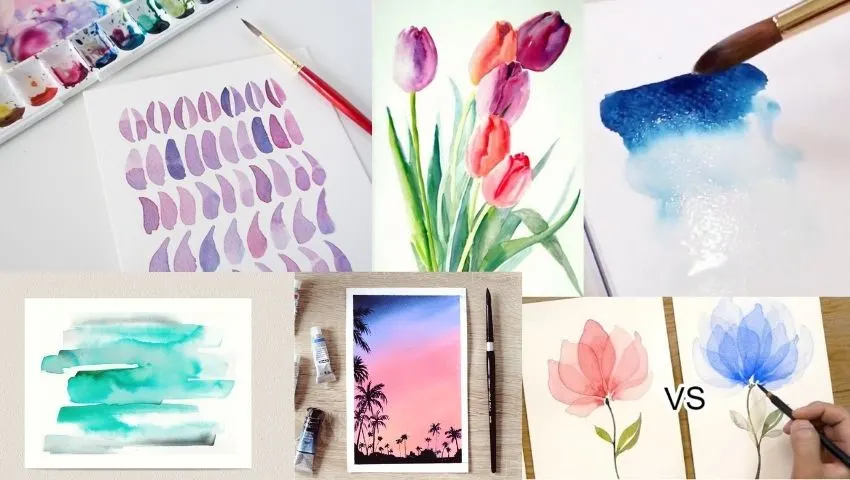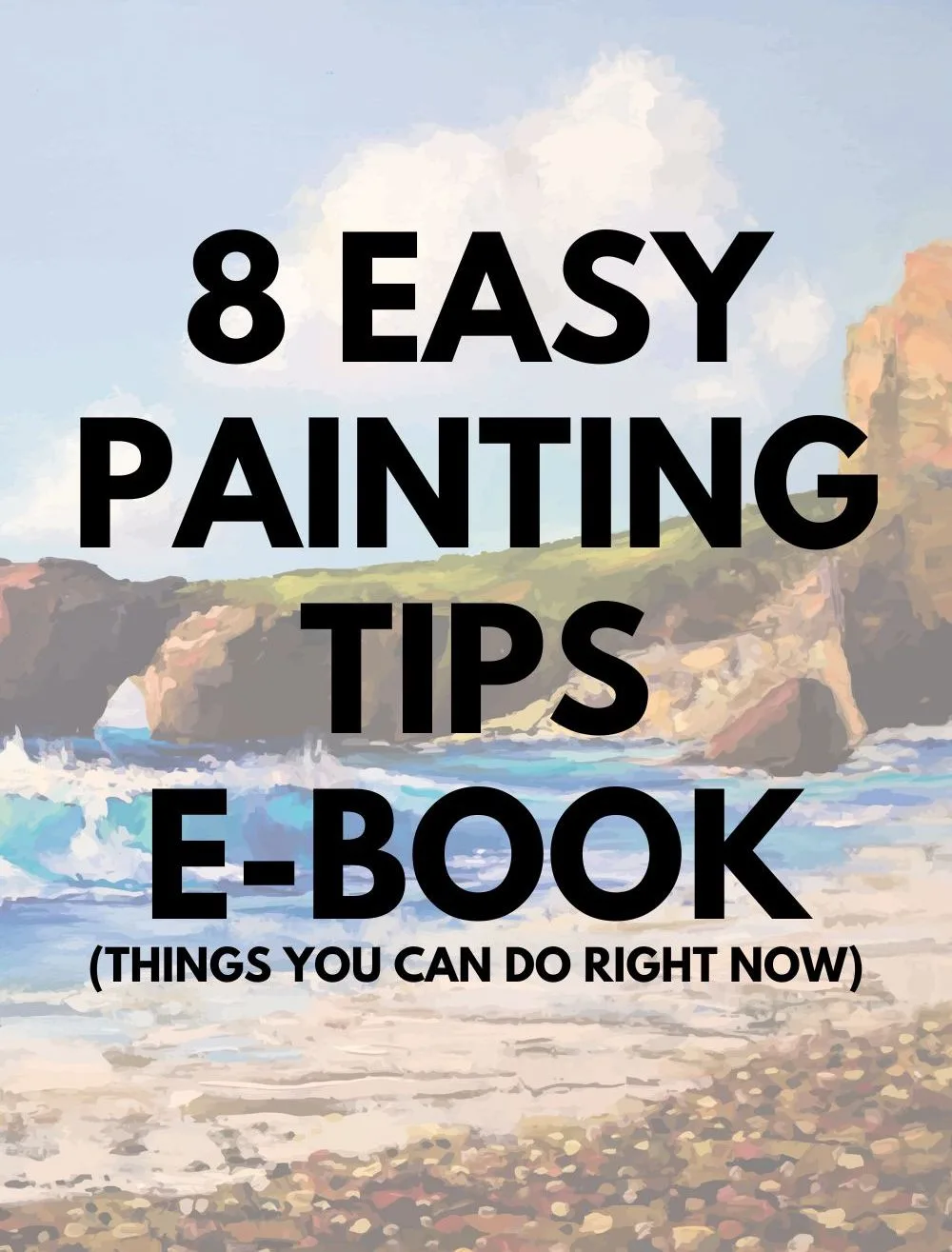Do you want to paint with watercolors but don’t know how and where to start? Here are 55 easy watercolor painting ideas for beginners.
Moreover, you will explore new and different techniques in watercolor that will make you a pro in no time!
There are many basic techniques and watercolor tutorials that will help you get different results.

Wet-on-Wet
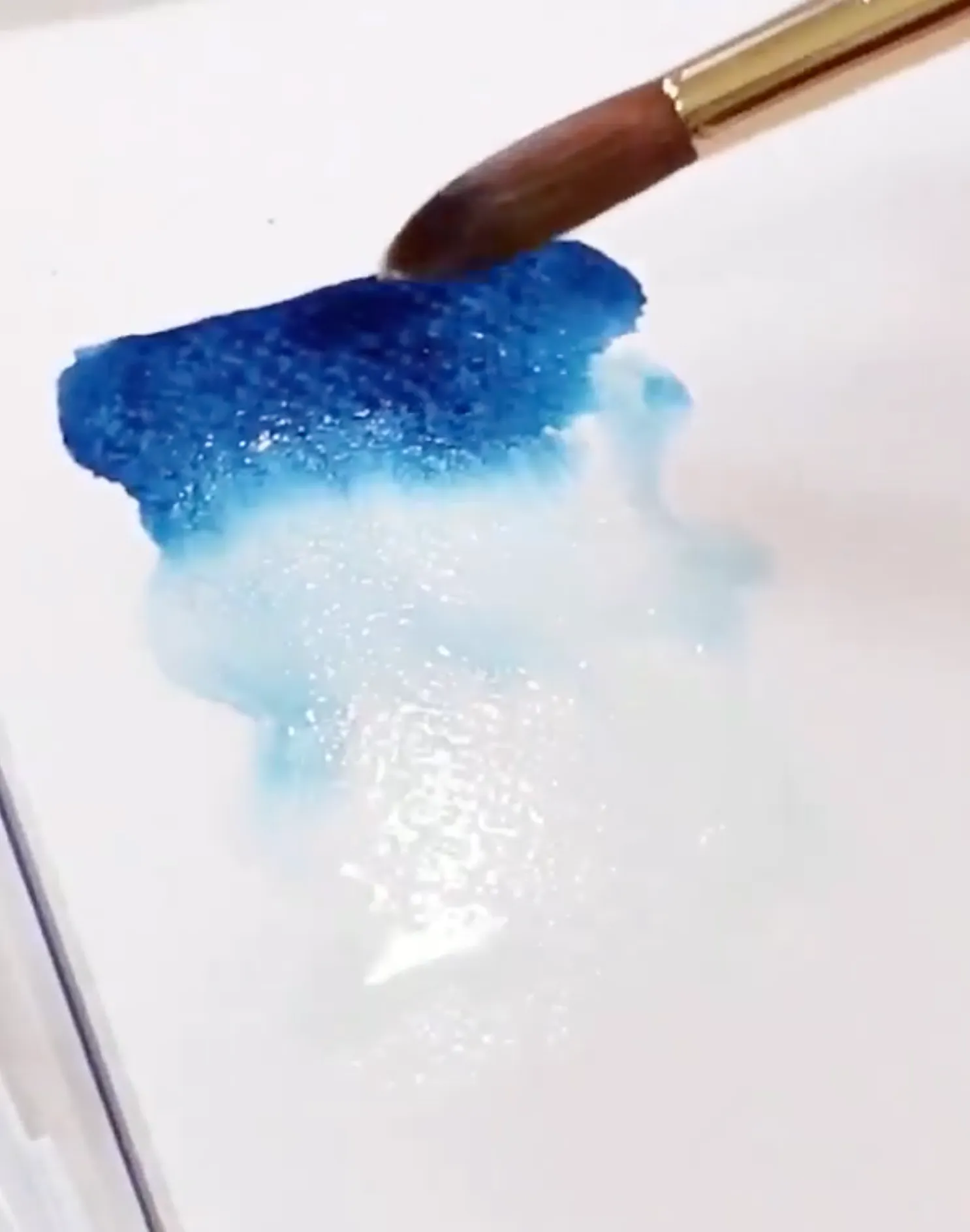
The Wet-on-wet technique is famous among watercolorists.
For this technique, apply a little bit of clean water to make the paper moist.
Now add your desired watercolor to the wet paper.
The wet paint will follow the water to create aesthetic effects.
The results depend on your skill level, but practice will enable you to master this technique.
Read Also:
- Dull Watercolor Painting (Avoid This Mistake)
- 9 Ways to Remove Watercolor from Clothes
- 11 Best Watercolor Brushes
- The Best Ways to Make Watercolor Darker
- 100 Easy Watercolor Painting Tutorials Anyone Can Do
Wet-on-Dry
Beginners find the wet-on-dry technique more effortless than the wet-on-wet method.
First, add wet watercolor to dry paper.
The paint follows your brush, giving you complete control.
As a result, you can create various visual textures.
Moreover, this technique produces more intense and less muddy paintings.
Ombre Effect
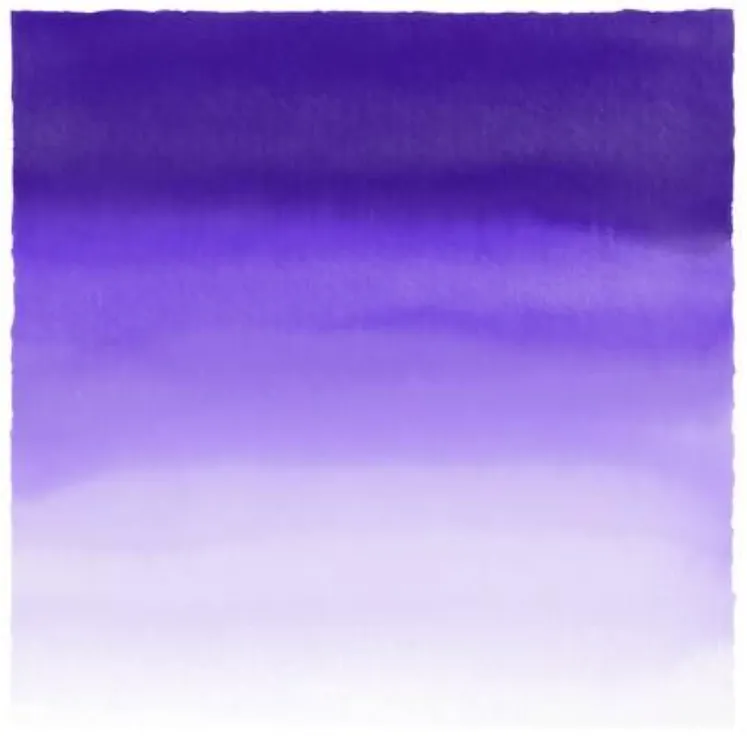
The Ombre technique uses a single color to create different hues.
Apply a concentrated amount of color to watercolor paper.
Drag the paint downwards by moving the brush.
Keep adding more water to create lighter shades.
This technique will result in a transition from darker to opaque color.
Monochromatic Painting

Even with basic skills, you can create an aesthetic painting with one watercolor!
Mix green paint in a lot of water.
Create mountains at the top of the paper.
Combine more green in water for the next one.
Keep adding mountains, and each one should be darker than the previous.
Get creative by painting monochromatic still life.
Watercolor Gradient Effect
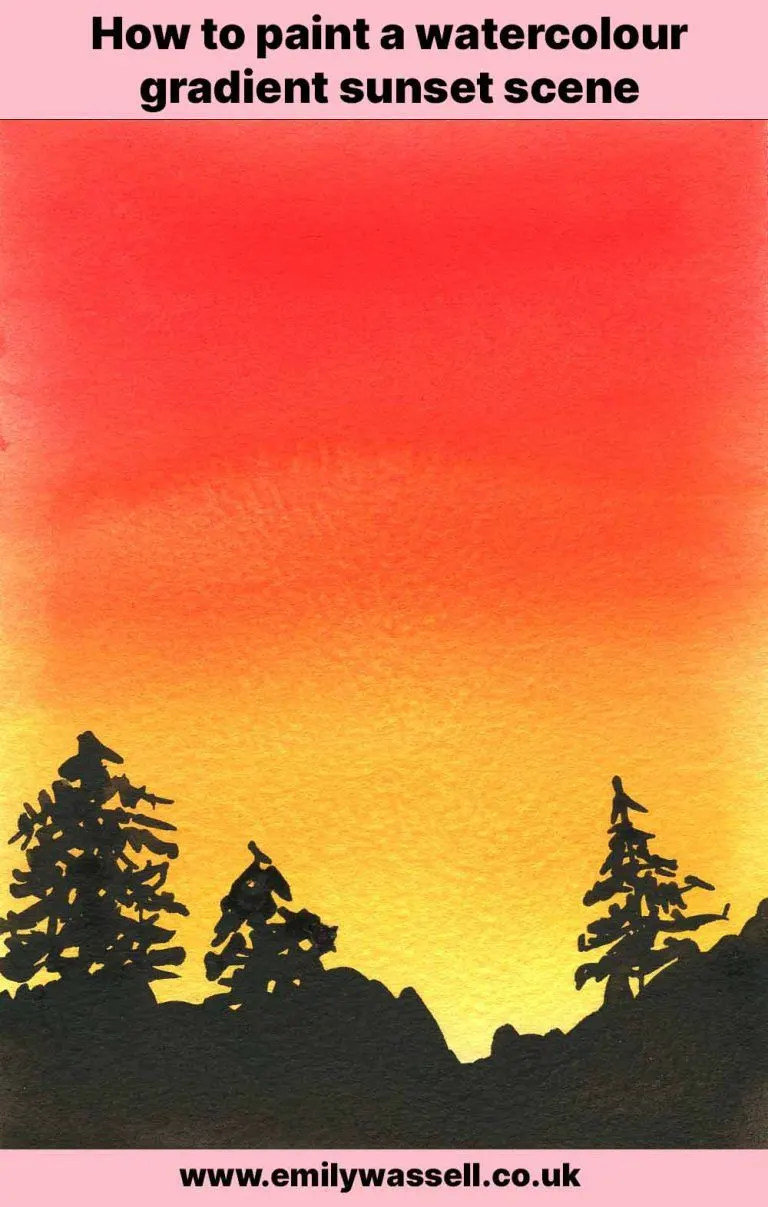
In gradient effect, one color transforms into another smoothly.
Start by adding an orange color.
Keep it concentrated at the top and lighter as you move it downwards.
Now add yellow with a lot of water.
Make it darker at the bottom.
You should dilute the colors at the contact point.
Watercolor Wheel of 12 colors
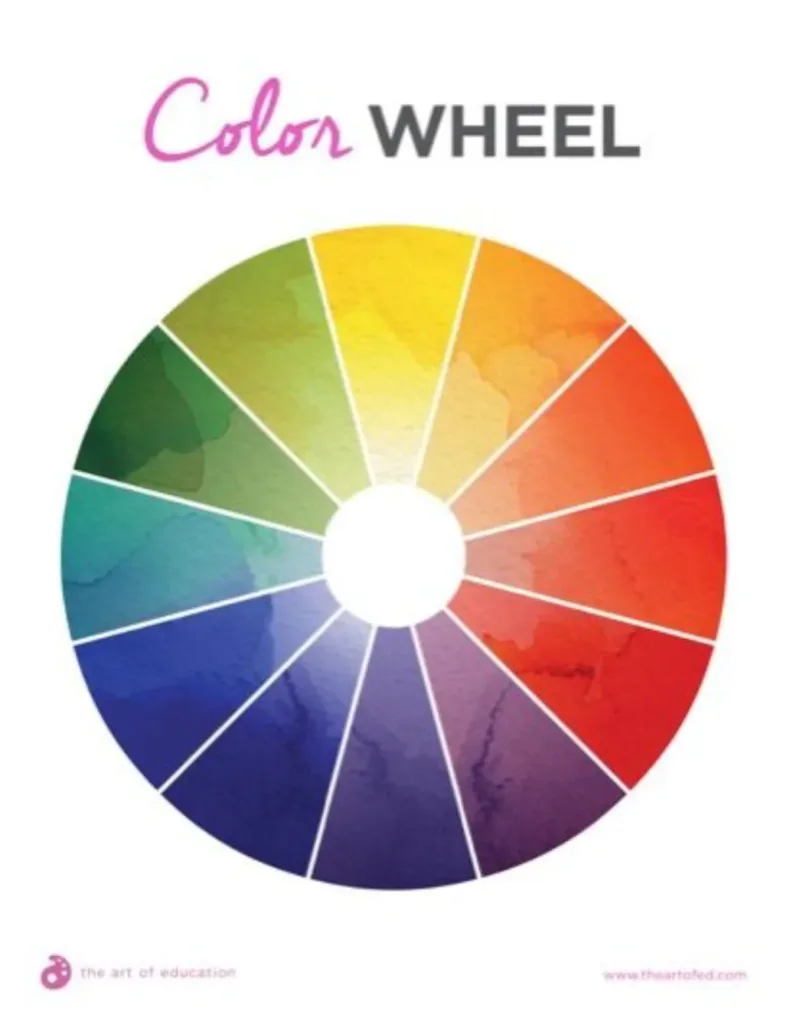
Learn color theory with a watercolor wheel.
It’s a great technique to create a beautiful painting of a color wheel.
Draw a perfect circle and cut it into 12 slices.
Now you will add the primary colors (red, yellow, blue) at equal distances.
Next, include secondary colors (orange, green, purple) by mixing primary colors.
Finally, add six tertiary colors formed by mixing one primary and one secondary.
Water to Paint Ratio
The ideal water to paint ratio is 50/50 for a saturated color.
You can reduce their amounts for different shades.
Add more water for a lighter hue.
On the flip side, increase the paint to intensify the painting.
Geometric Watercolor Painting

You can practice blending watercolors with this fun activity.
Draw any geometric shape.
For instance, you can draw different triangles.
Fill each with various color gradients.
You can also add ombre effects to some triangles.
Geometric painting doesn’t let you get bored.
Simple Shapes
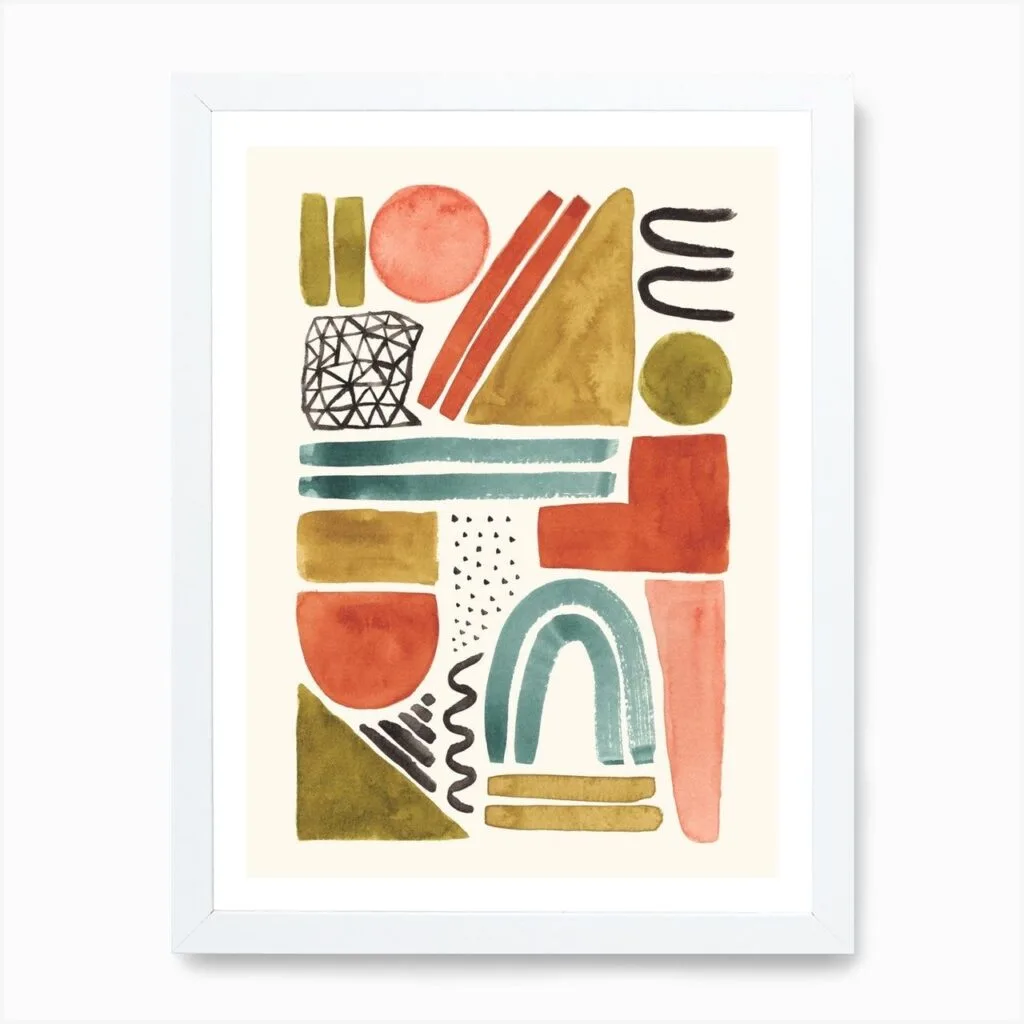
Painting a simple shape is one of the best watercolor painting ideas.
You can create alluring abstract art with simple shapes and even irregular figures and lines.
Then, add discrete colors to them. You may use gradient and ombre effects too.
Popsicle Sticks
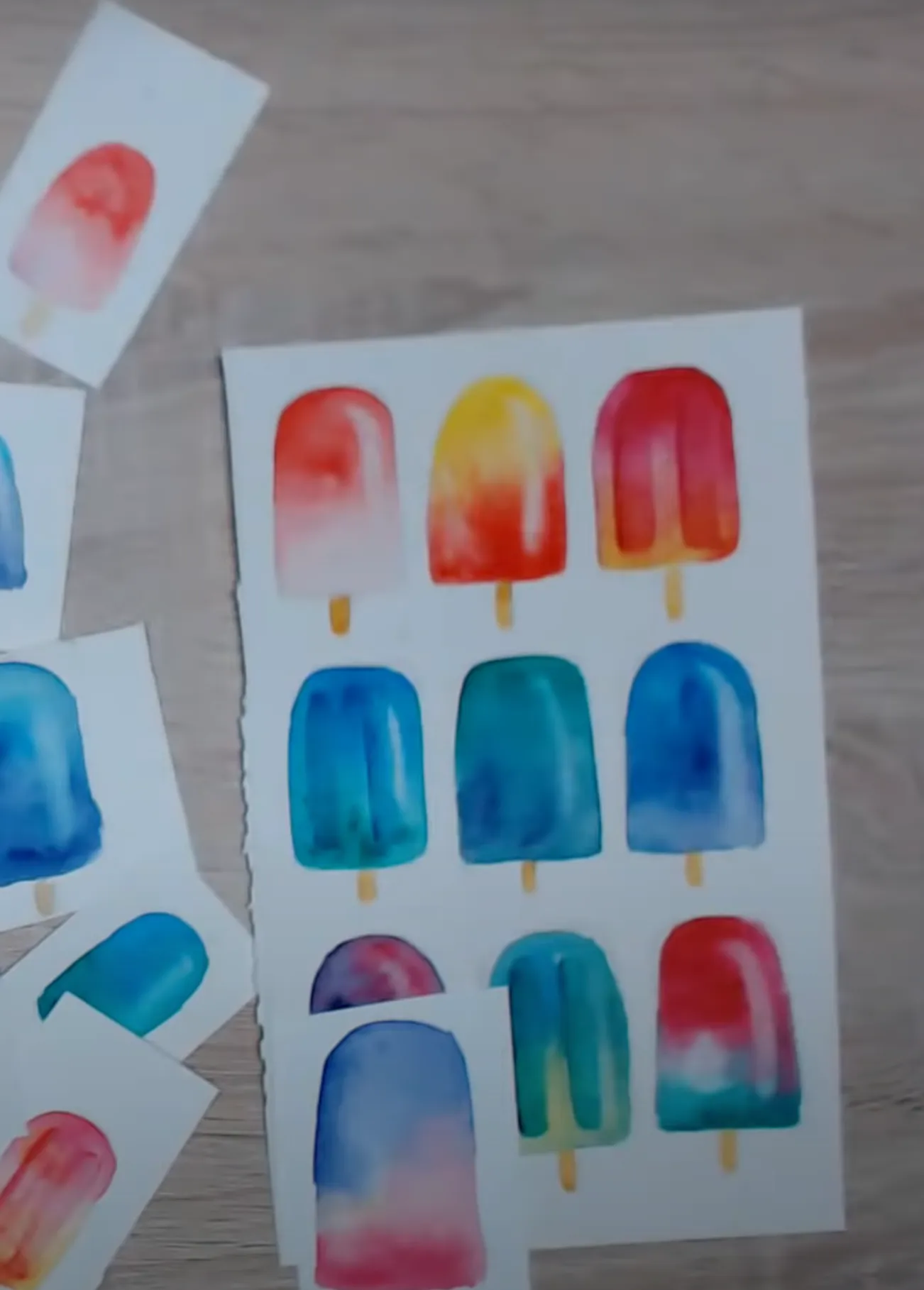
This watercolor idea is a great way to utilize your free time.
Draw popsicle sticks with a pencil.
Paint the bar with brown color (mix the three primary colors if you don’t have brown watercolor).
Fill the ice part with different colors, textures, and gradients.
Practicing Precision to Avoid Color Bleeding
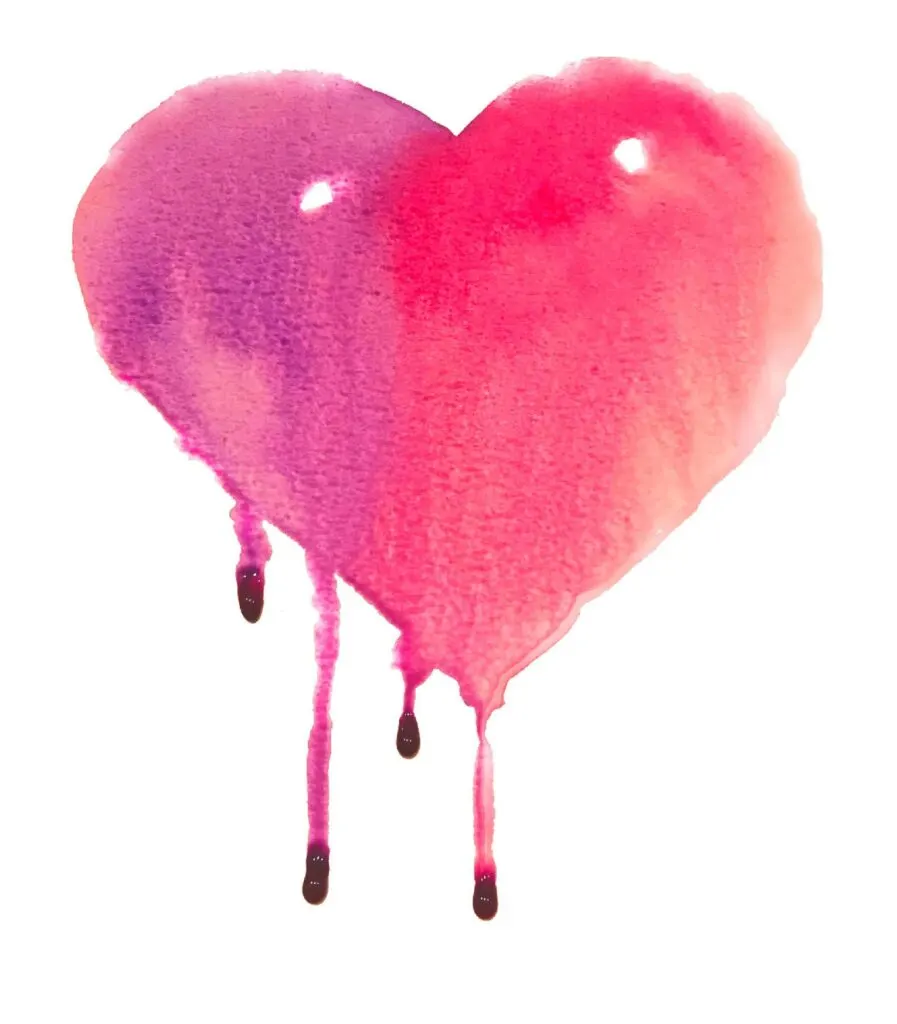
Many beginners face color bleeding.
This activity will help you practice precision by drawing a circle and dividing it into unequal segments.
Then, color each portion with a different color.
Avoid painting closer segments simultaneously to prevent one paint from seeping into another one.
Dry Brush Technique
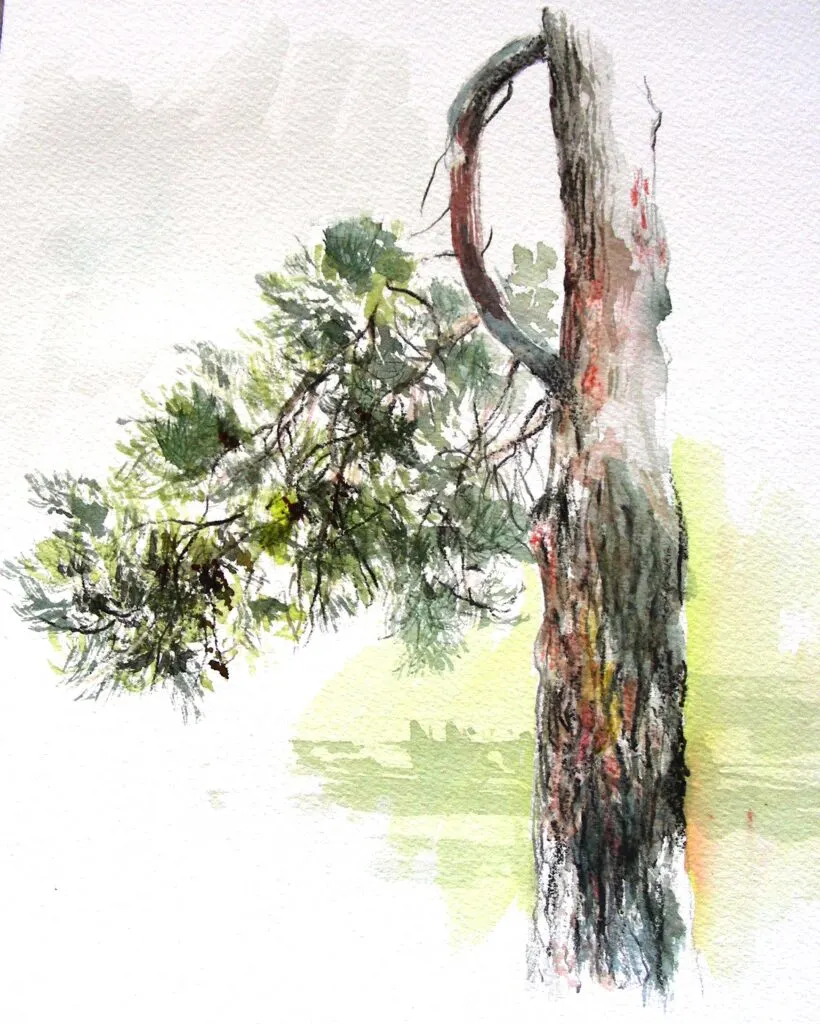
In this technique, you don’t need to damp watercolor brushes.
Instead, the dry brush technique lets you create unique textures and add life to your paintings.
For instance, paint a tree with brown watercolor.
Then, once it is dried, draw various strokes with brown paint loaded on a dry brush.
Brush Strokes Tips
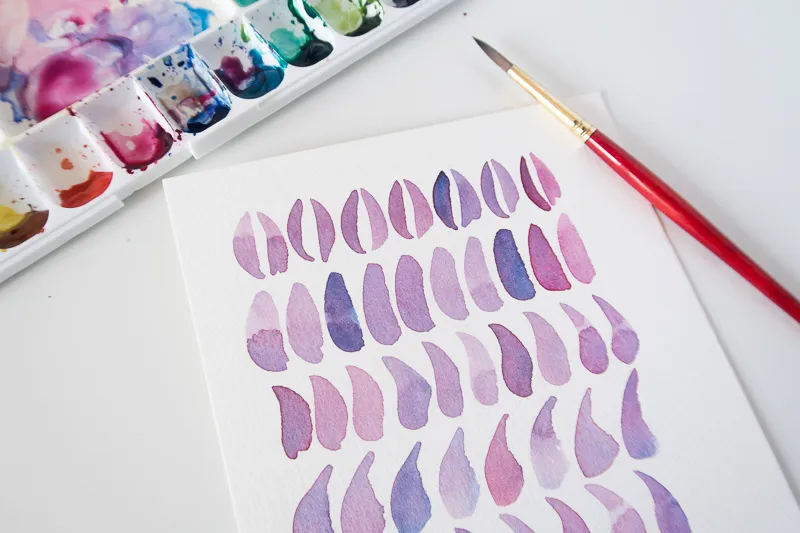
You can create different strokes with your brush.
Hold your brush closer to the bristles to control the color better.
Start with the tip of a round brush.
Apply pressure as you pull down into the belly of the encounter.
Then again, release it lightly.
This tip helps paint various leaves.
Interesting Textures
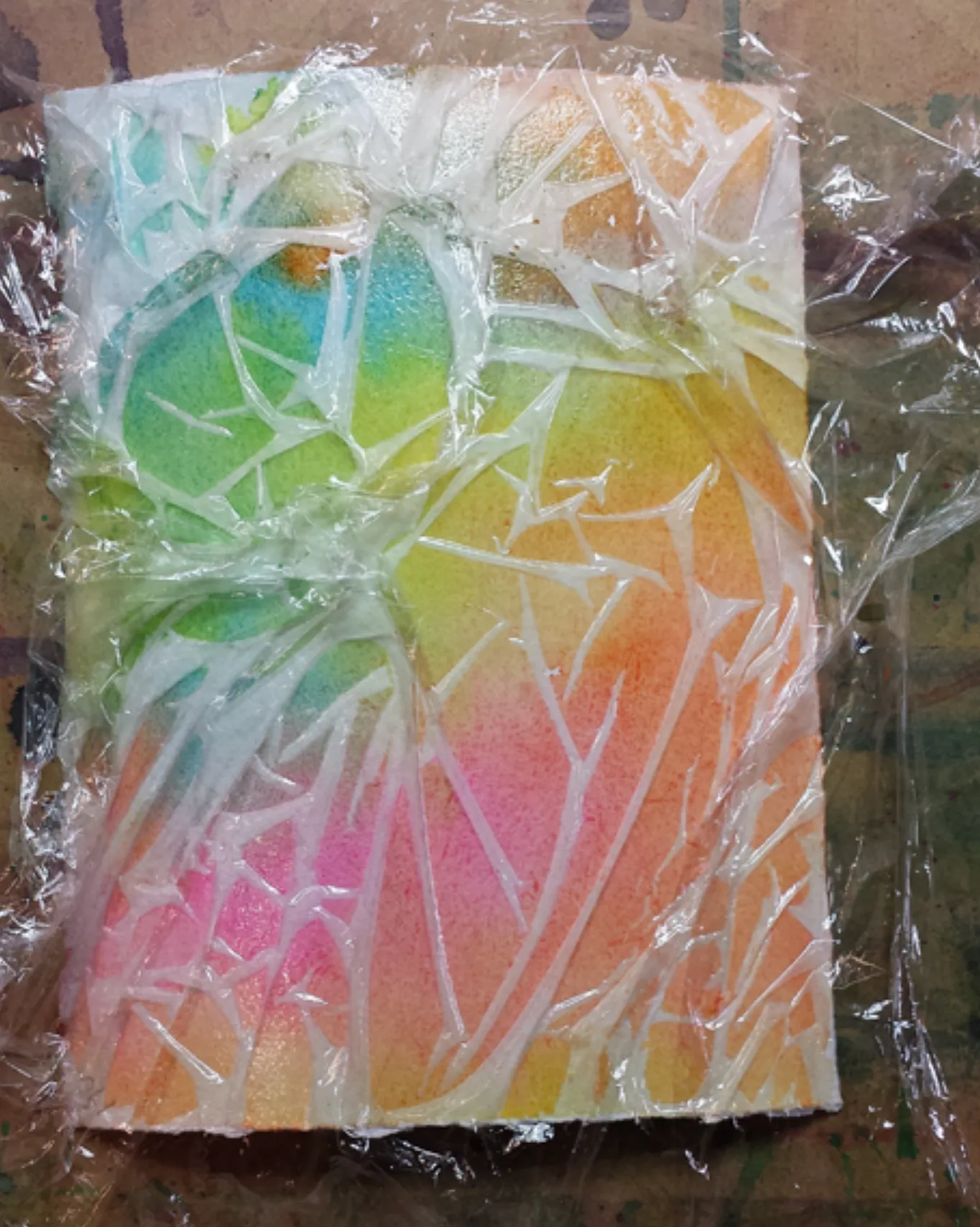
You can experiment with watercolors to produce interesting textures.
Once you have painted your paper by blending various colors, cover it with plastic.
Crumpling the plastic will create unique patterns.
Remove the cover once the paint is completely dry.
Watercolor Flowers
Painting flowers with watercolors is the best thing you can do to relax.
Take watercolor paper and draw flowers of various types like roses, lilies, lavenders, etc.
Fill every flower with bright colors.
Then, you can add green leaves to them.
Midnight Sky
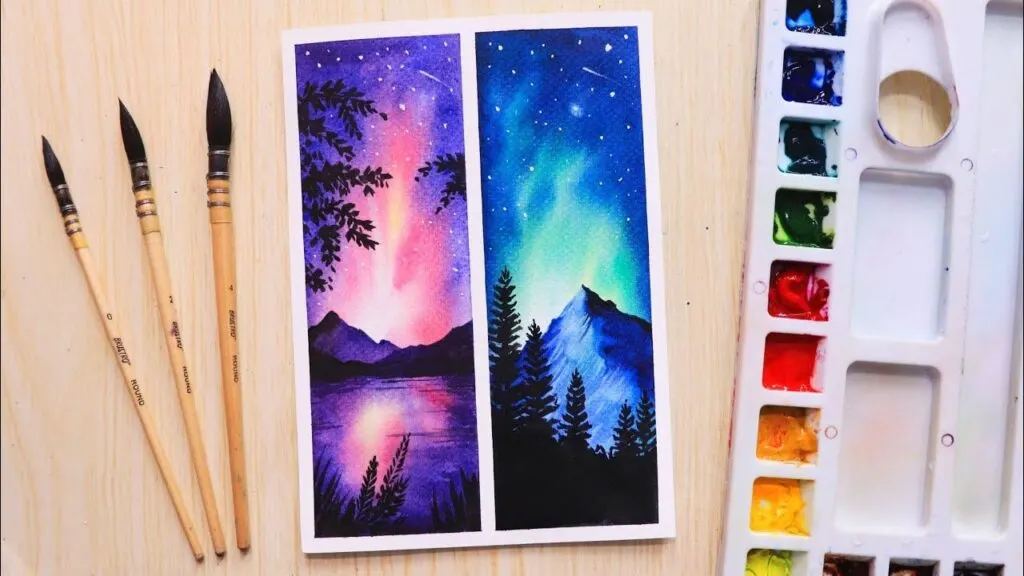
Midnight sky paintings are appealing and refreshing.
You can use shades of blue or purple to paint your night sky.
Use the gradient technique, prepare the background sky and ocean.
Add dark mountains at the horizon and some trees and grass.
Happy Watercolor Painting
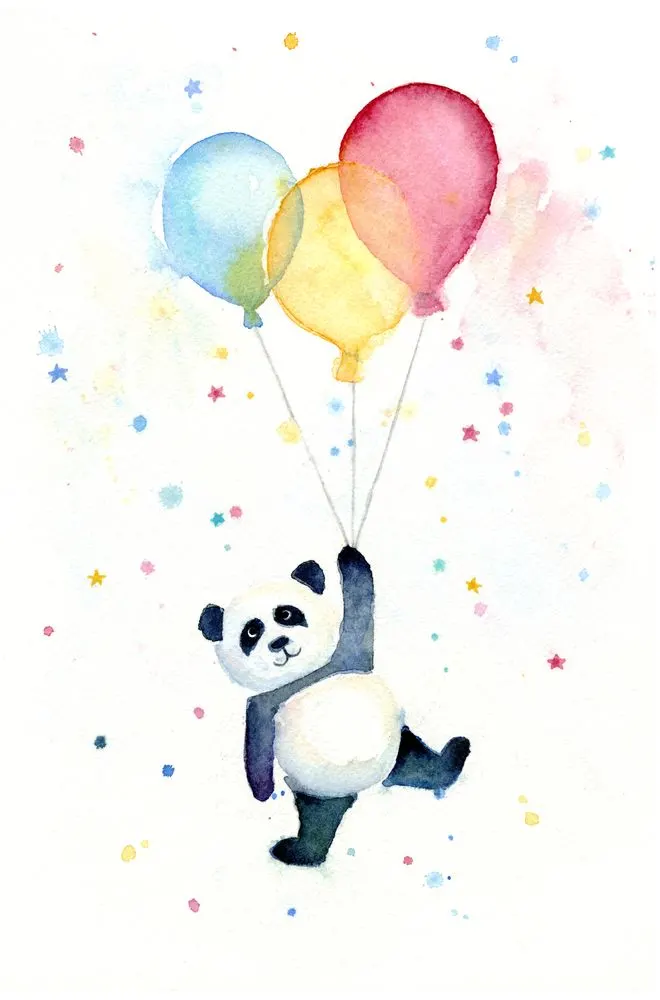
Are you feeling happy? Express your emotions through your watercolor paintings. Don’t think; just draw what makes you happy.
It is one of the best watercolor ideas. For example, you can draw a cute mushroom hut or a panda with balloons.
Dark Colors to Intensify Watercolor Paintings

Dark paintings are tough to create with watercolors.
Even if you think your artwork has the right dark colors, they will fade when it dries.
So it is better to have more paint than you need.
Add a second layer after the first one dries.
But avoid too much water.
Simple Landscape
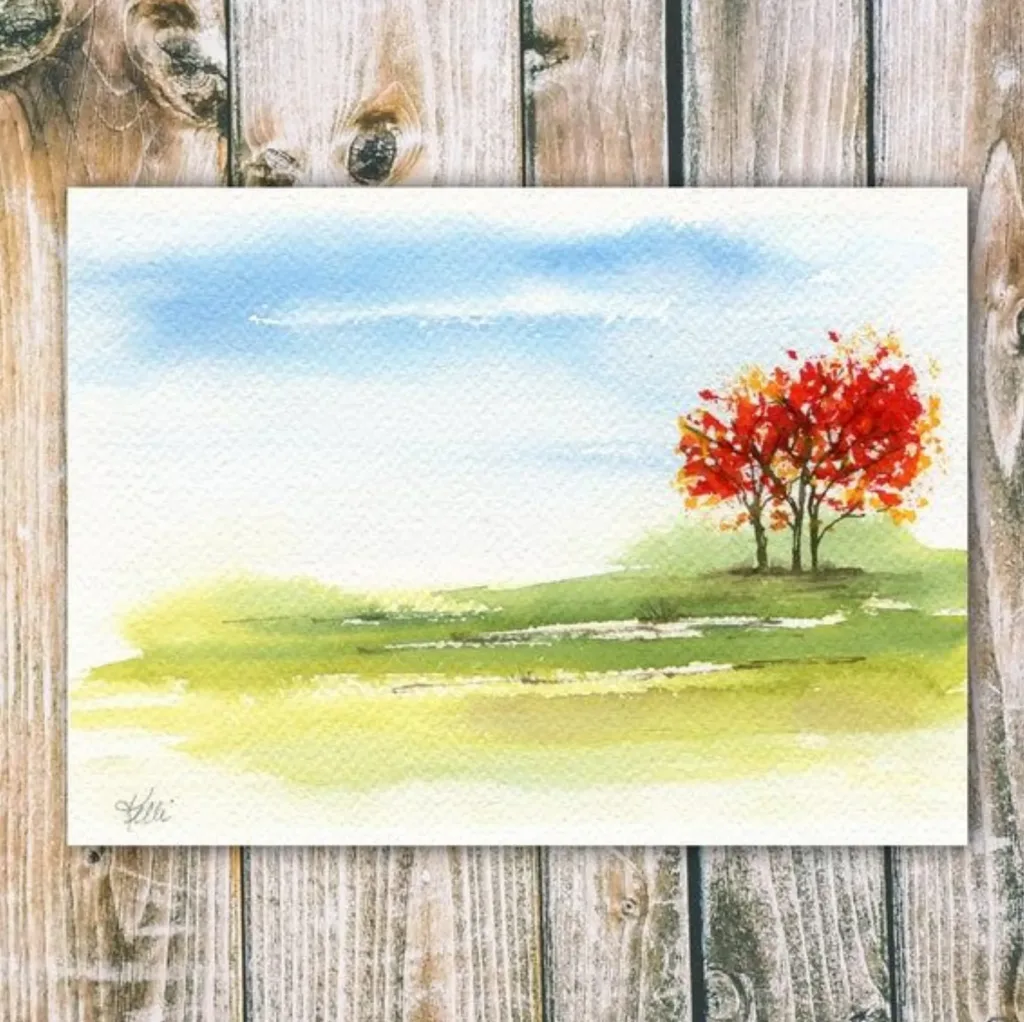
As a beginner, start with simplicity.
Simple watercolor landscapes are easy yet attractive.
With the wet-on-wet technique, paint the blue sky.
Add different layers of green at the bottom.
You can create grass with the dry brush technique. Complement your landscape with trees.
Abstract Art With Watercolors
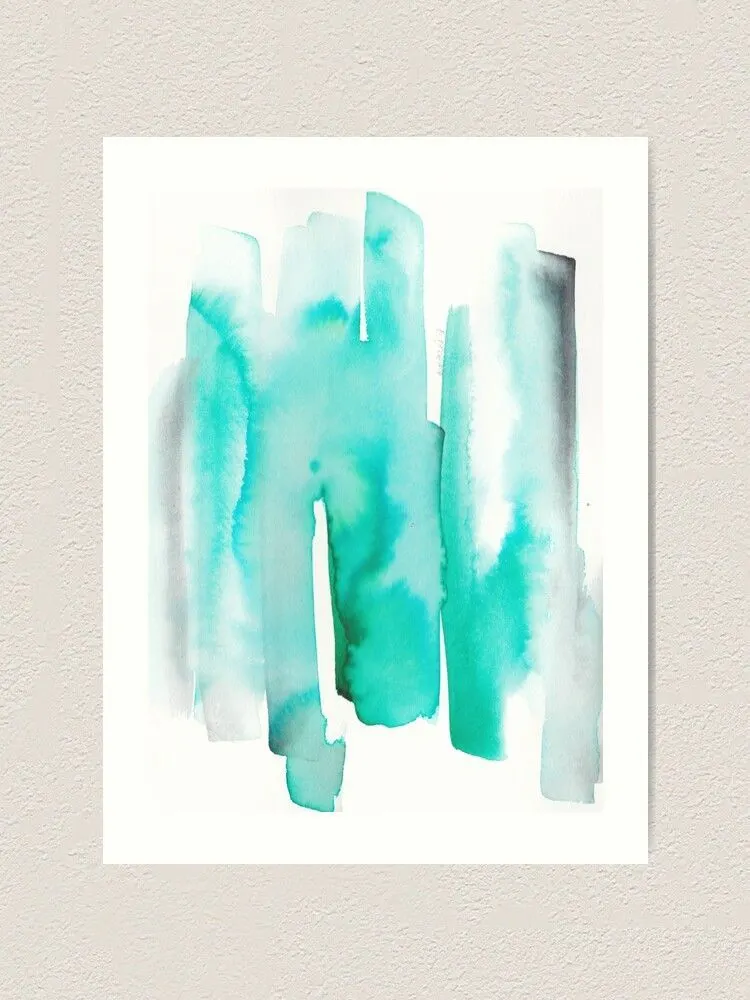
Creating abstract art with watercolors is effortless.
You can apply the wet-on-wet technique to add contrasting colors.
The colors will flow randomly to create beautiful fluid effects.
You may splatter colors and move them around with your brush to get different styles.
Palm Trees
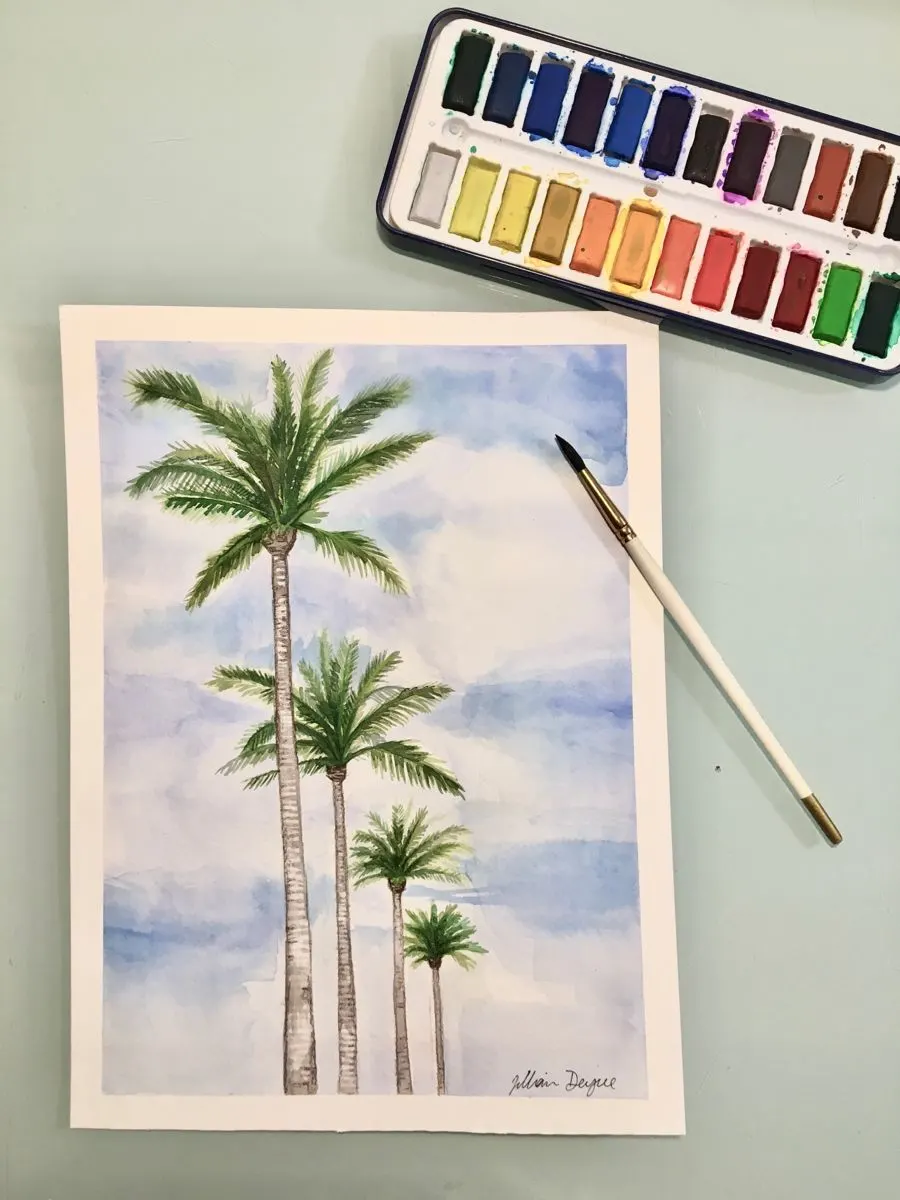
Paint the desired background. Now add brown stems of palm trees.
With a thin brush, draw curved lines emerging from the top of trees.
Next, add small lines to create the leaves of palm trees.
Load your brush with green color only as water causes color bleeding.
Sunset Painting
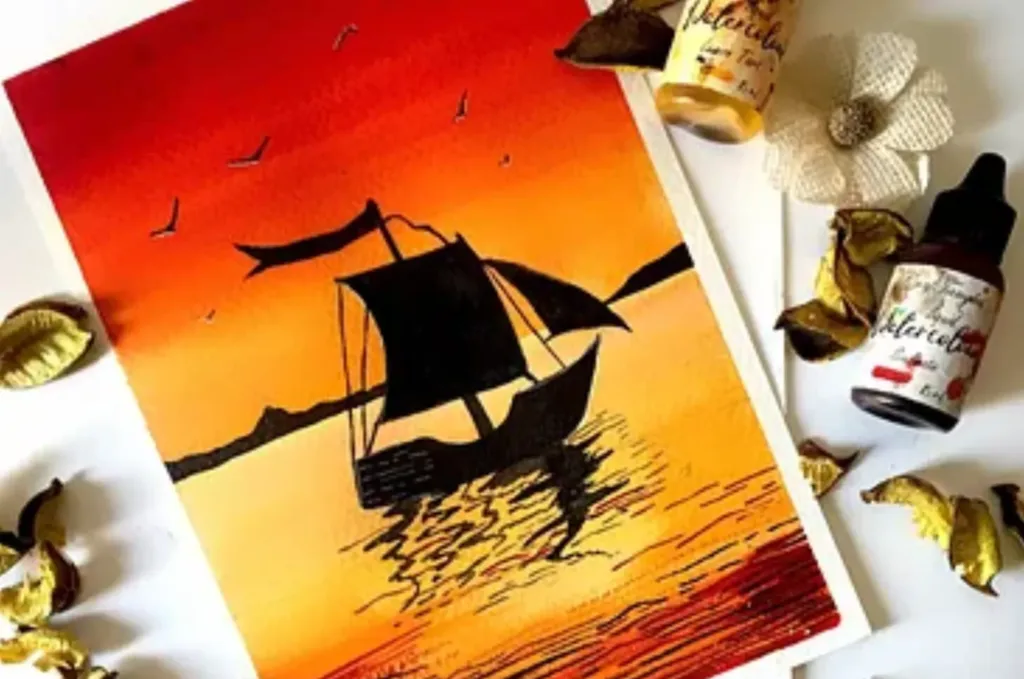
Create a beautiful sunset painting with only three colors: orange, red, and yellow.
Draw a straight line segment to divide the paper into two parts: sky and sea.
Use some of the best watercolor paints you can get and paint them with gradient technique, such that the red changes into orange, which further changes to yellow.
Add other elements with black.
Free as a Bird
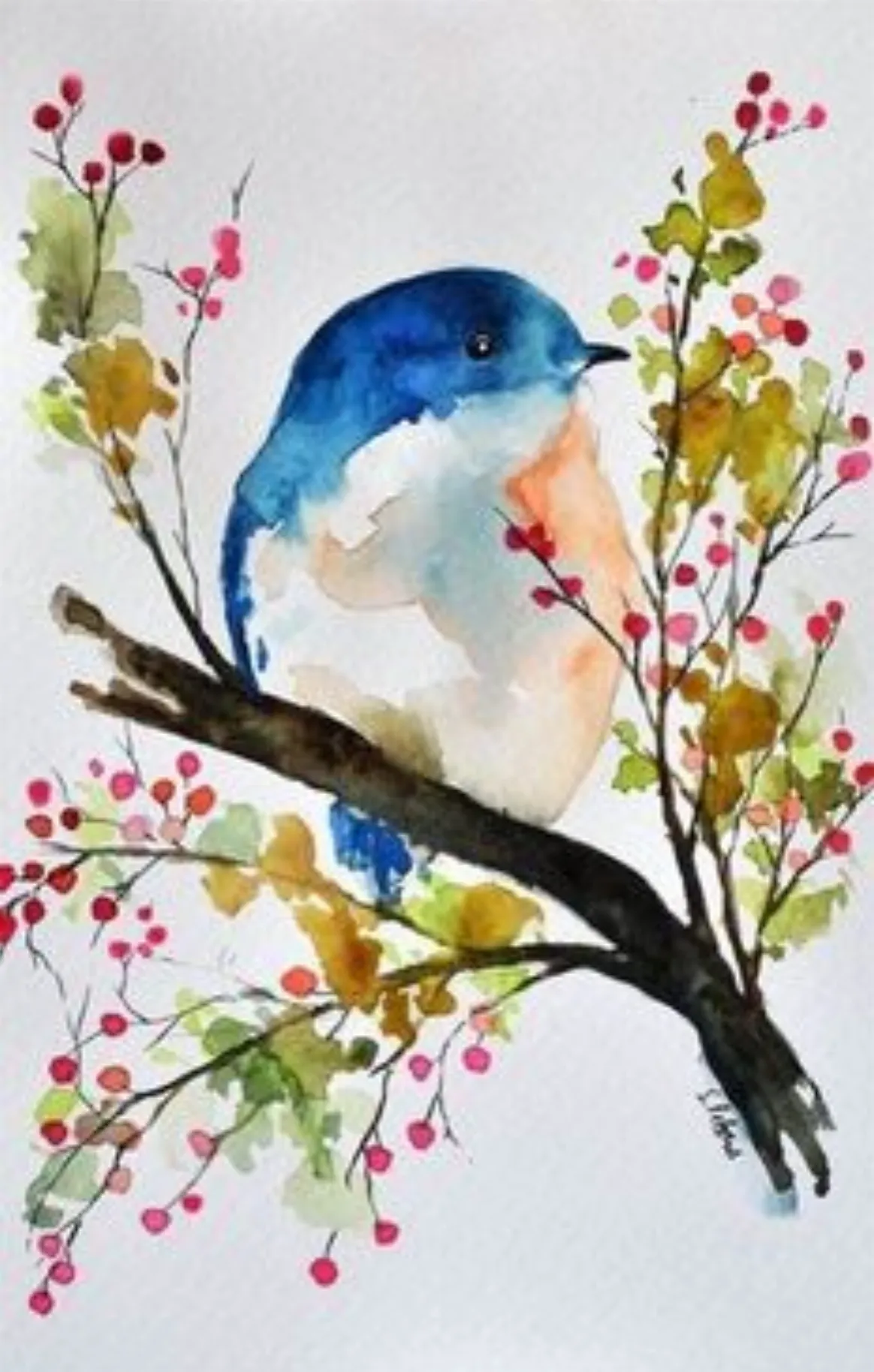
Draw peacefully with these watercolor painting ideas.
Birds symbolize freedom and hope.
So why not paint a cute bird with watercolors?
Paint a branch with leaves and flowers.
Draw a bird.
Fill its head and wings with blue color and leave the rest in white.
Watermelon
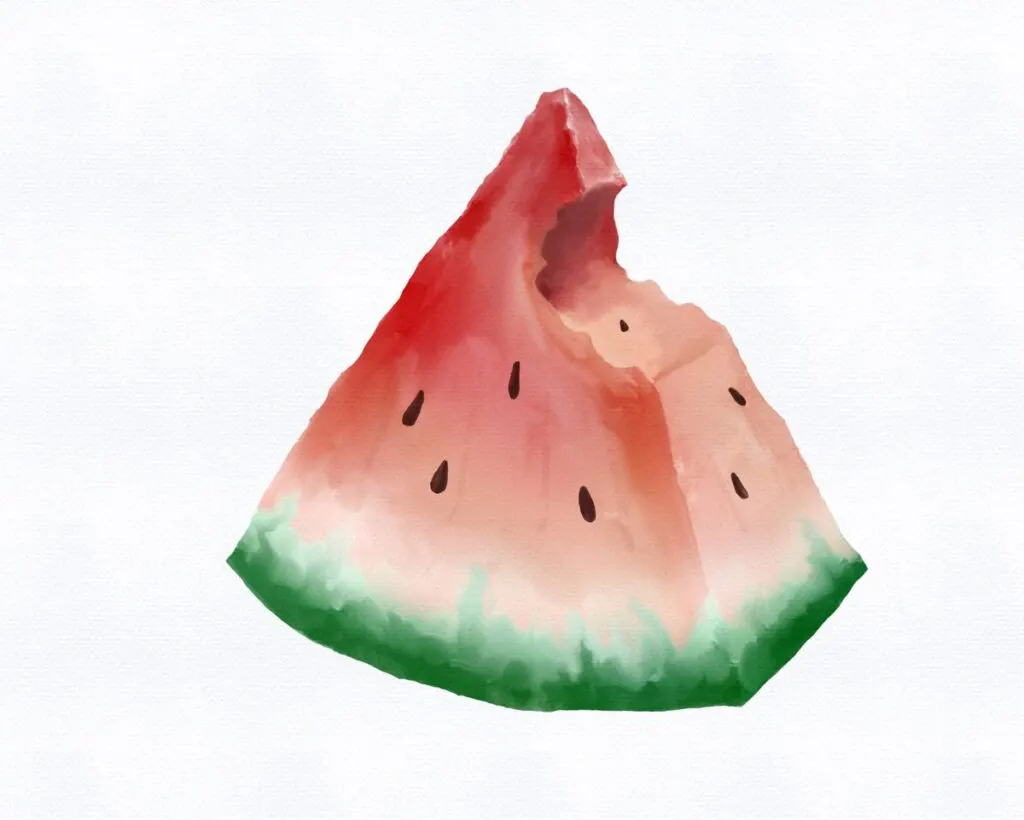
You can draw a watermelon slice with these easy steps.
First, make a triangle with a round bottom.
Now apply water.
Add red and move it around.
Do not add too much.
Once it’s dry, add light green at the bottom and move it upwards a bit.
Finally, draw some seeds.
Window with Flowers
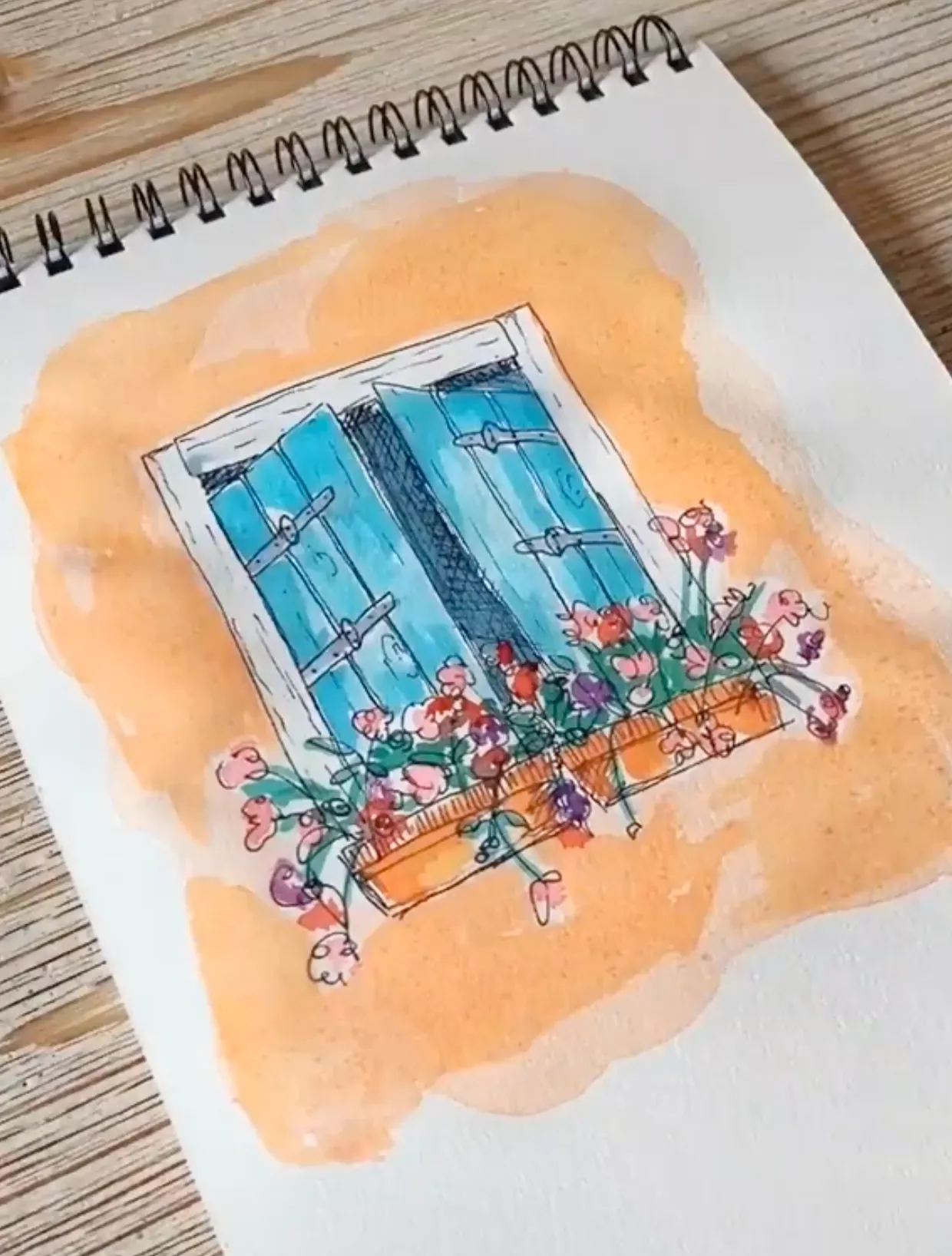
Experiment with watercolors by trying different objects and elements from real life, just like a window.
Make a rough sketch of your window.
Then make it vibrant with various bright colors.
Flowers give more charm.
So, add tiny flowers to the window.
Butterfly with One Watercolor
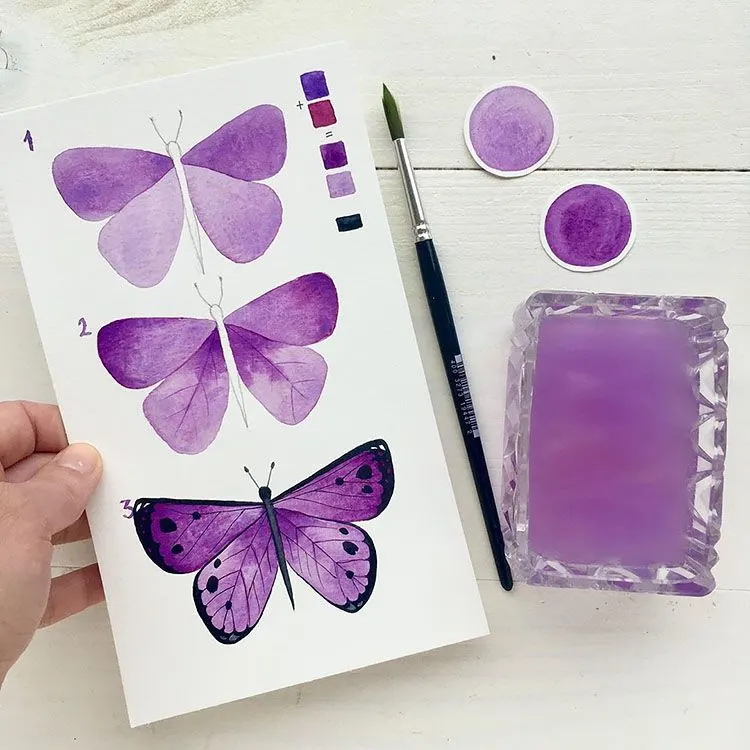
Pick your favorite color and some paper towels.
Draw a butterfly with a pencil.
You can create different shades of that color in your watercolor palette.
Add those shades to various parts of the wings.
When switching from one shade to another, clean your brush with paper towels.
You may outline it with black color.
Galaxy Painting
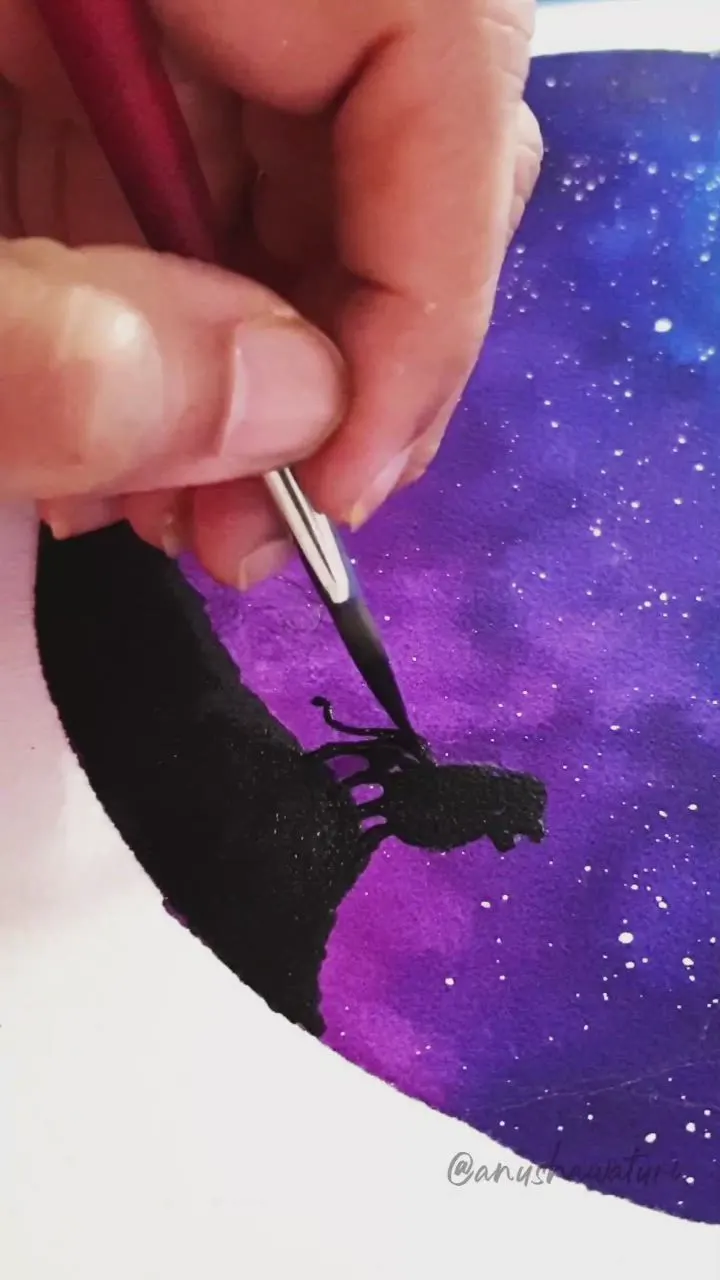
Painters draw these a lot, especially with acrylic paints.
There are no rules.
You just have to get creative to achieve an aesthetic galaxy.
You may use various colors or only one color (different shades).
Splatter some white paint using a toothbrush to create stars.
Boat Painting
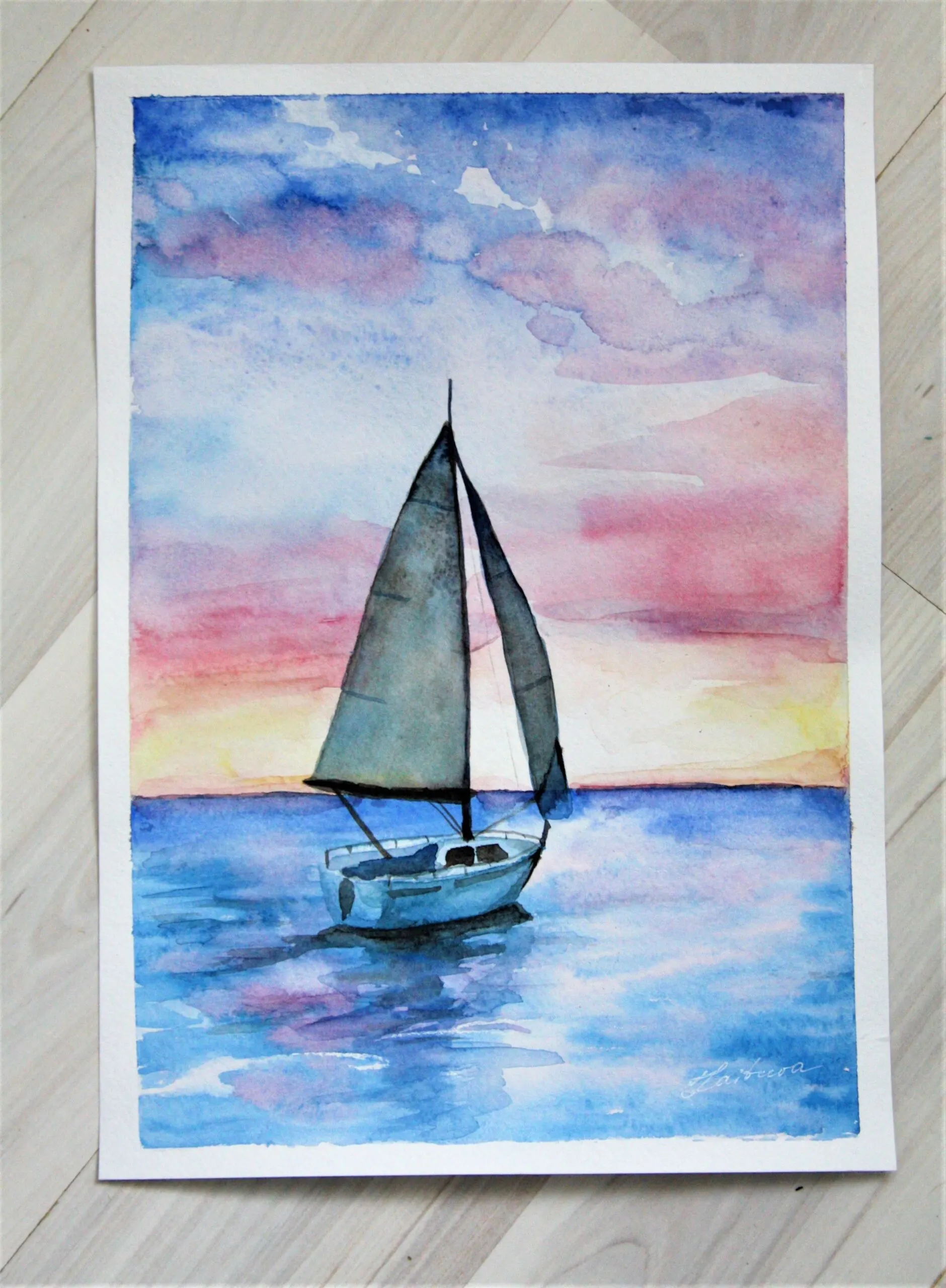
Enjoy a sea adventure with watercolors!
Paint blue colors on your watercolor paper using the ombre technique.
Or you may paint a pastel sky instead of a blue one.
Add a simple boat that is darker than the background.
Create the shadow effect of a ship in the sea by moving the brush in random motion.
Lemon Painting
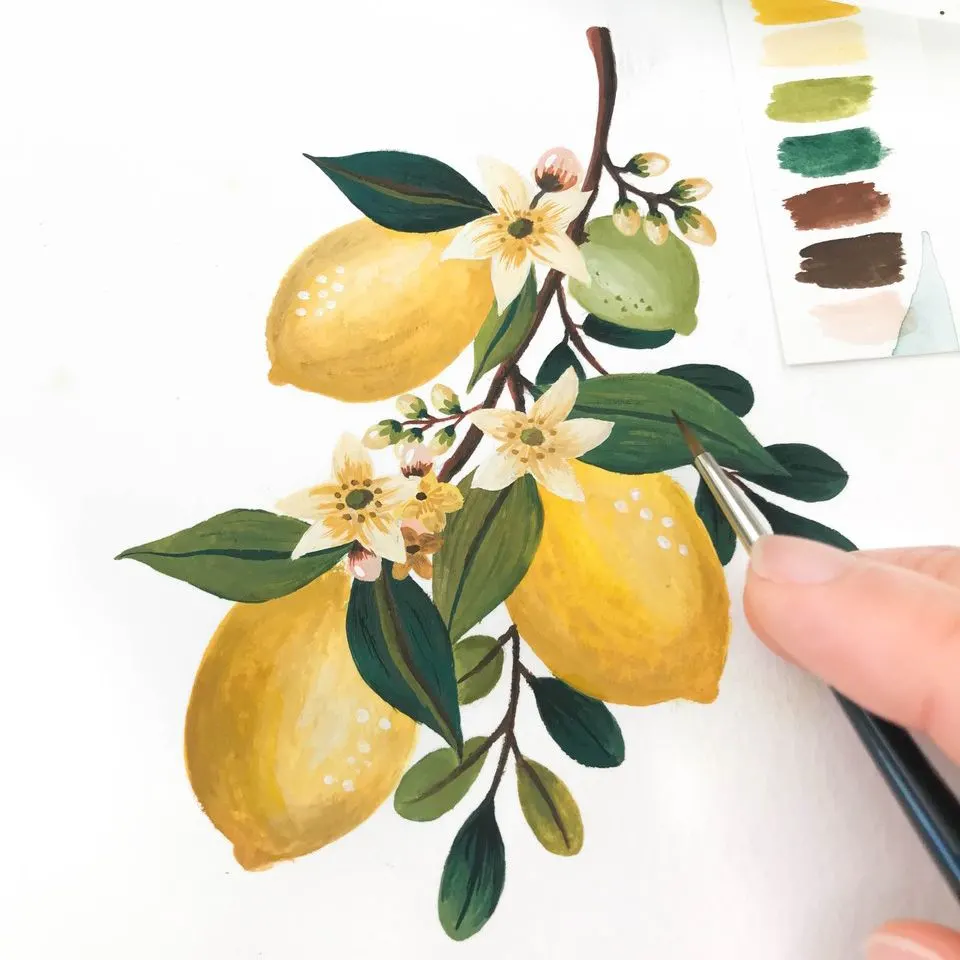
Draw lemons and leaves on your watercolor paper.
Fill the lemon with yellow paint.
Try moving your brush in circles to create a round ombre effect.
The color should be opaque at the part where light reflects.
Color the leaves with different green shades.
Ice-cream
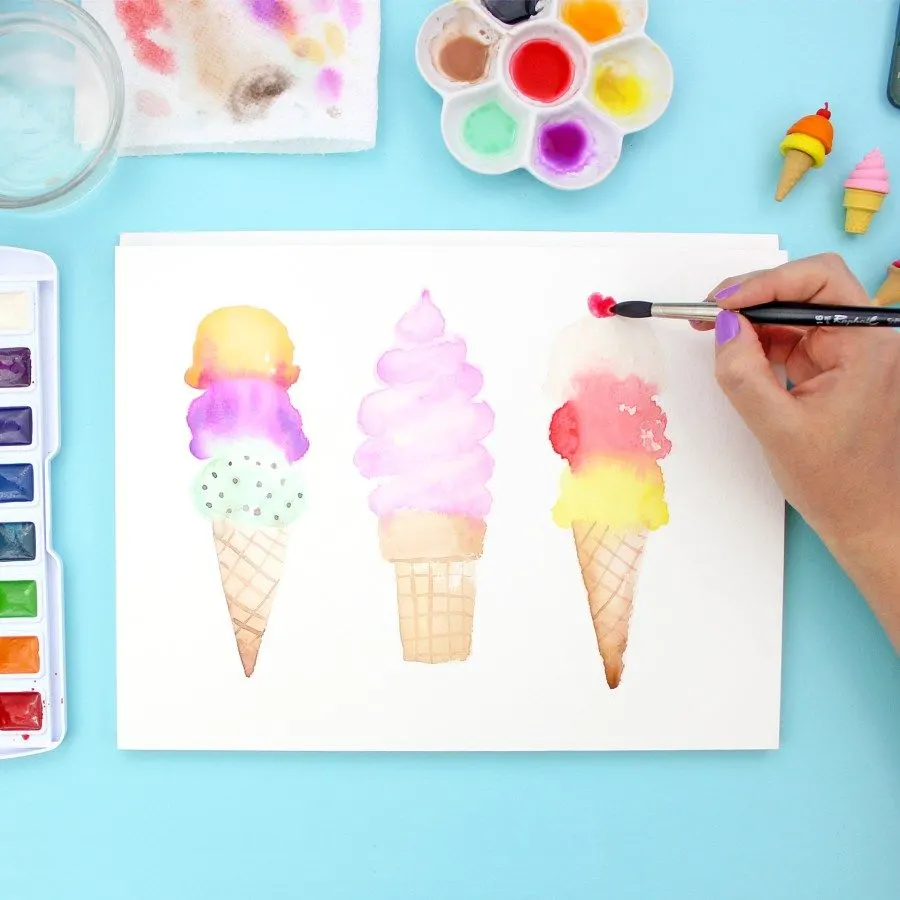
Practice watercolors by drawing cone ice cream in different ways.
You can draw small squares with gaps in the cone part.
Fill the squares with light shades of brown.
You can try adding more layers to the ice cream and coloring each one with different paint.
Pastel Blending Technique
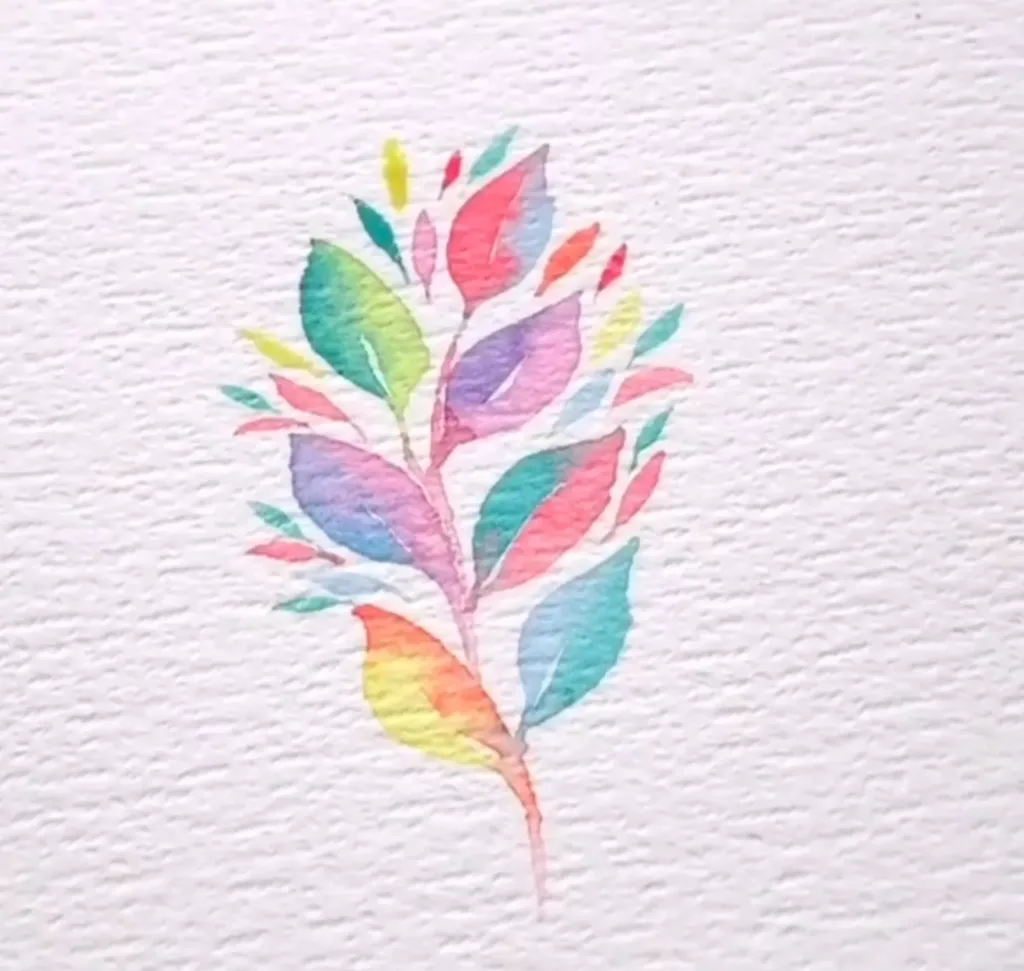
Pastel blending is one of the unique watercolor ideas.
Start by sketching some leaves.
Apply water.
Taking two soft colors like a combo of pink and purple will be great.
Paint each leaf with two colors.
Let the colors blend for a creative effect.
Bookmarks
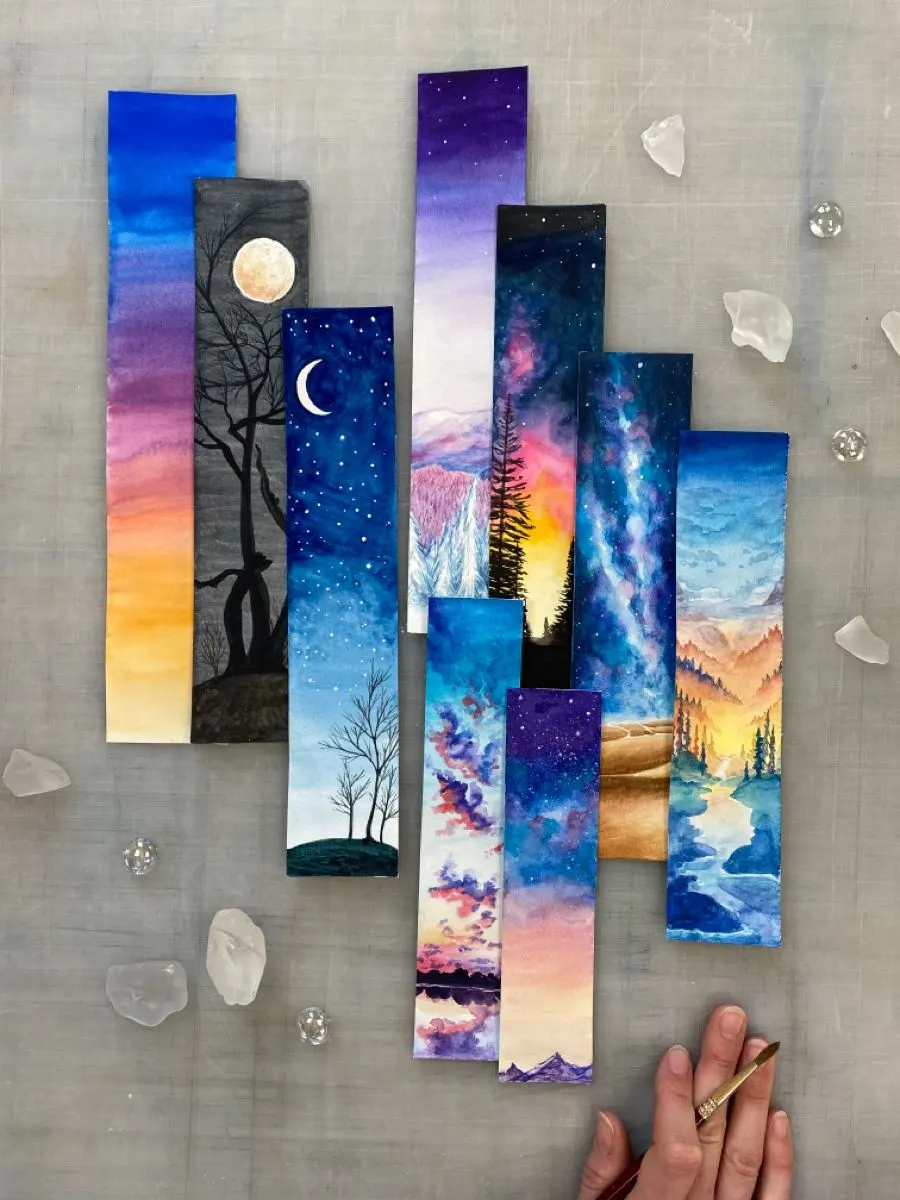
Design your watercolor bookmarks.
Cut out rectangular pieces of paper.
Paint each differently.
You may paint galaxies, sunset, or only flowers.
Go Green
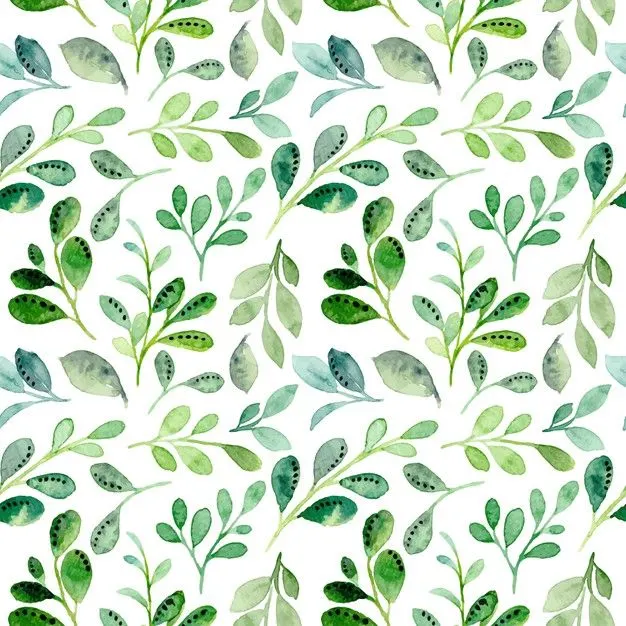
Have fun with the green color.
Search for different leaves on Google and draw them on your paper.
Try making various shades of green by changing the color to water ratio or mixing more colors in green.
Fill your leaves with beautiful shades that you have created.
Cotton Candy Sky
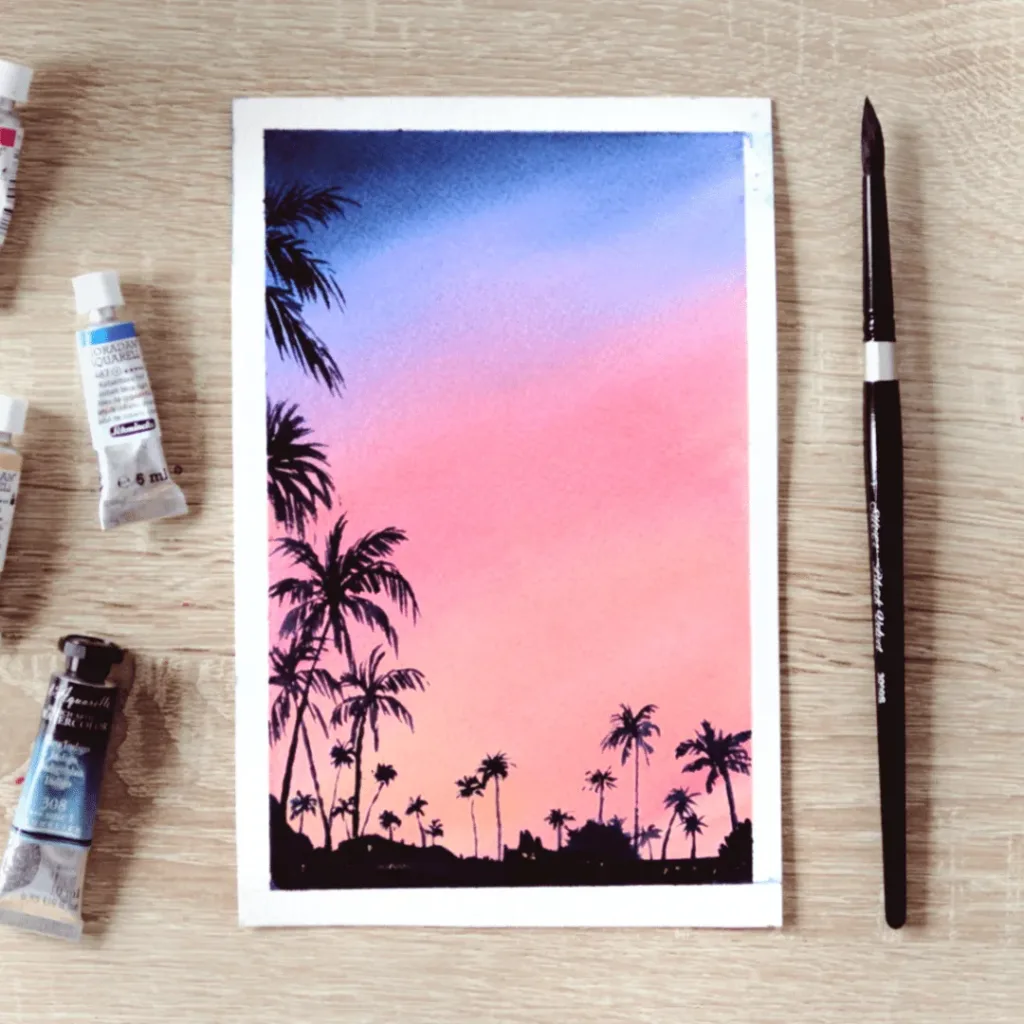
Give your watercolor paintings a pastel effect with these watercolor painting ideas.
Paint a gradient of the following colors: ultramarine blue, pink, and yellow.
These colors will turn your sky into a cotton candy sky.
Do not add dark colors.
Dilute them with water.
Colorful Animals
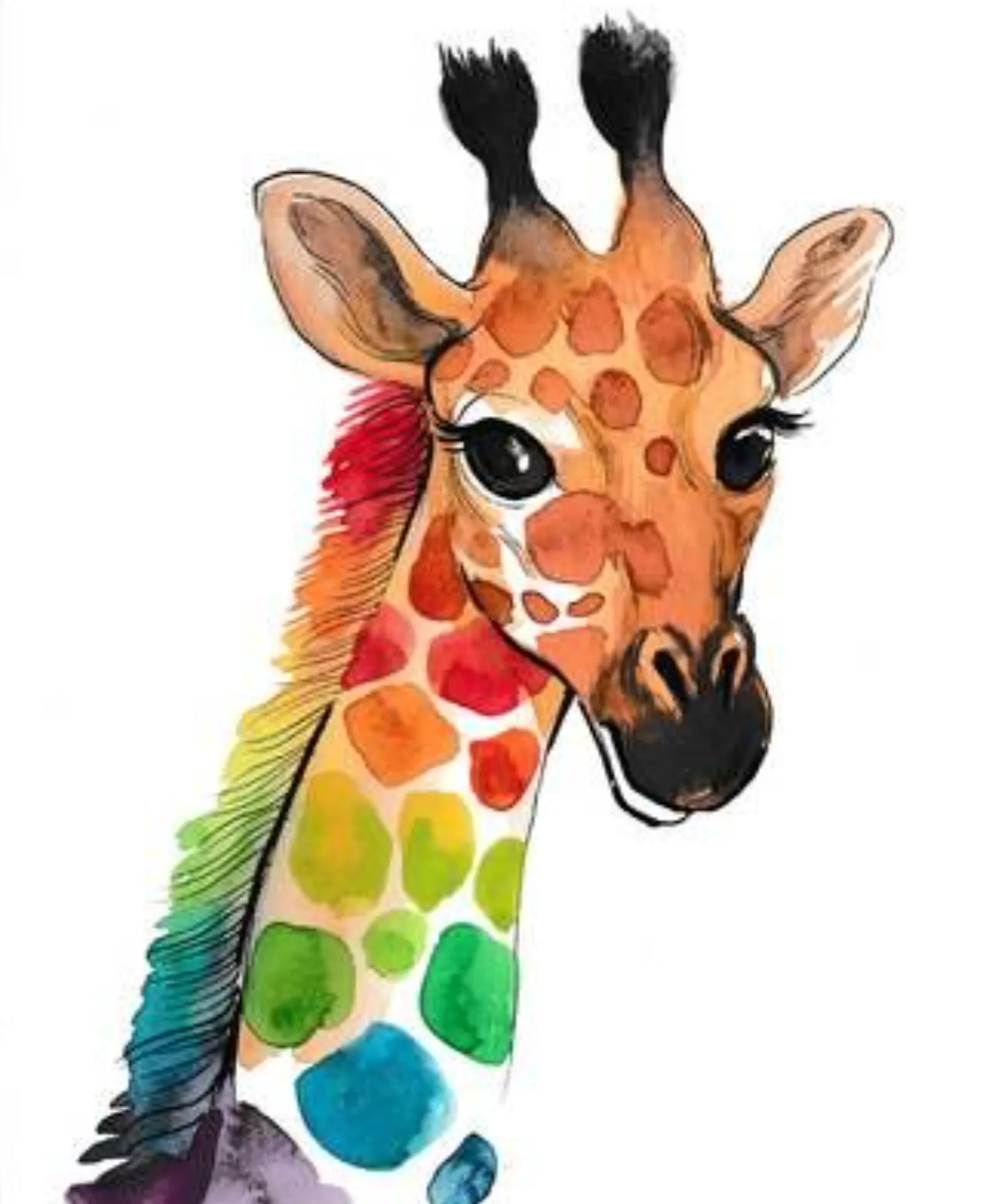
Instead of drawing usual animals, get creative by painting colorful ones.
For instance, sketch the head and neck of a giraffe.
Fill the spots of the giraffe with different colors and gradients.
You can create any animal that you like but uniquely.
Splattering technique
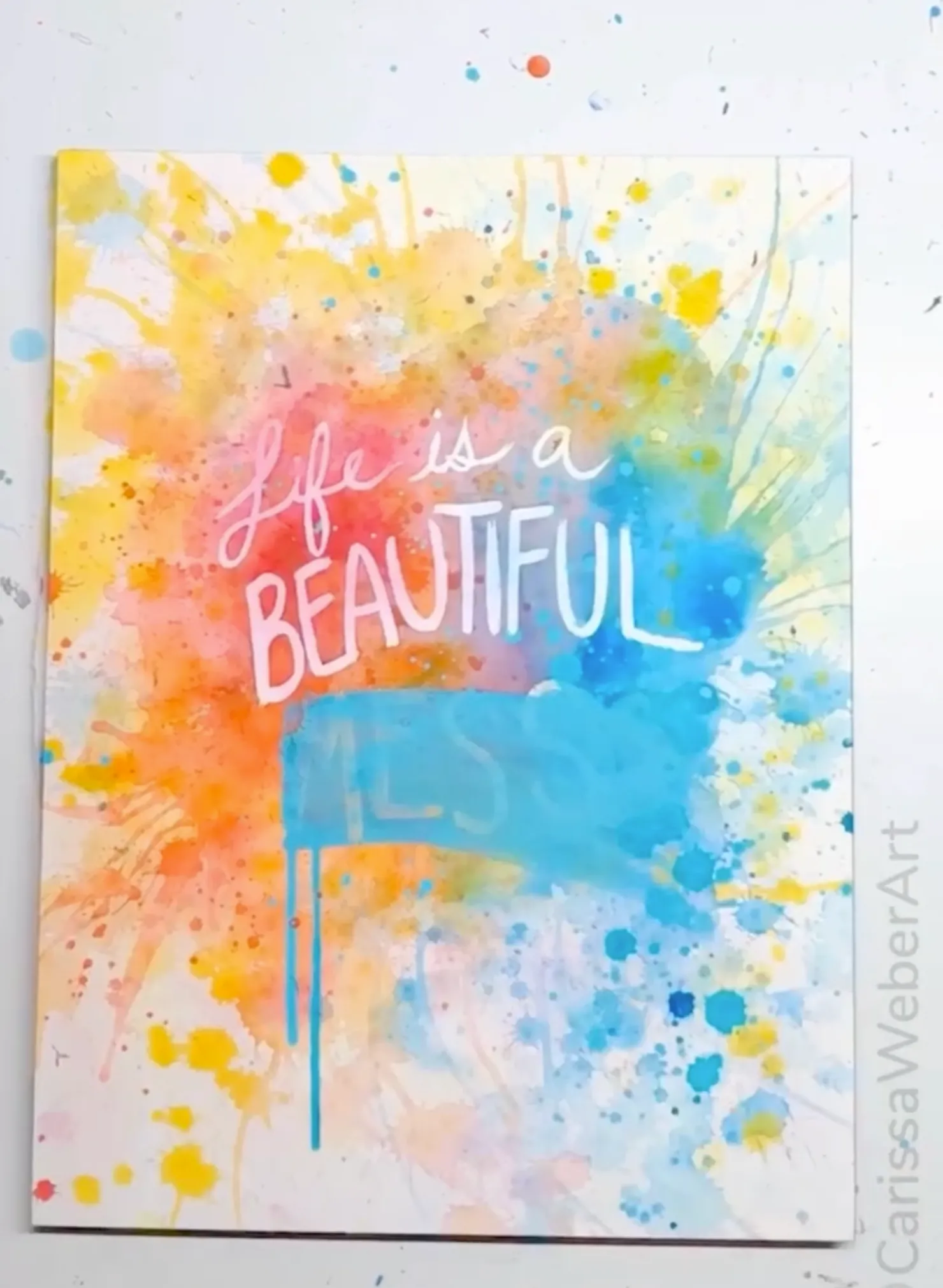
You can splatter watercolors over the paper with different brushes to make various textures.
You can create abstract art with this technique.
When you finish painting a midnight sky, splatter some white paint over it to create stars.
You will notice a significant difference after this.
Sponge Technique
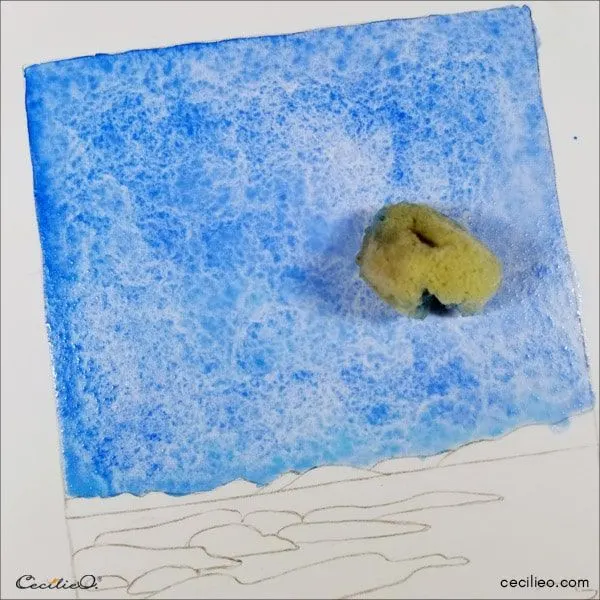
If you find watercolor brushes difficult to create textures, use a sponge instead.
Cut out sponges of different sizes.
You can produce various visual effects with sponges.
Moreover, you can use them to make the paper wet or remove excess paint.
Flowers in a Jar
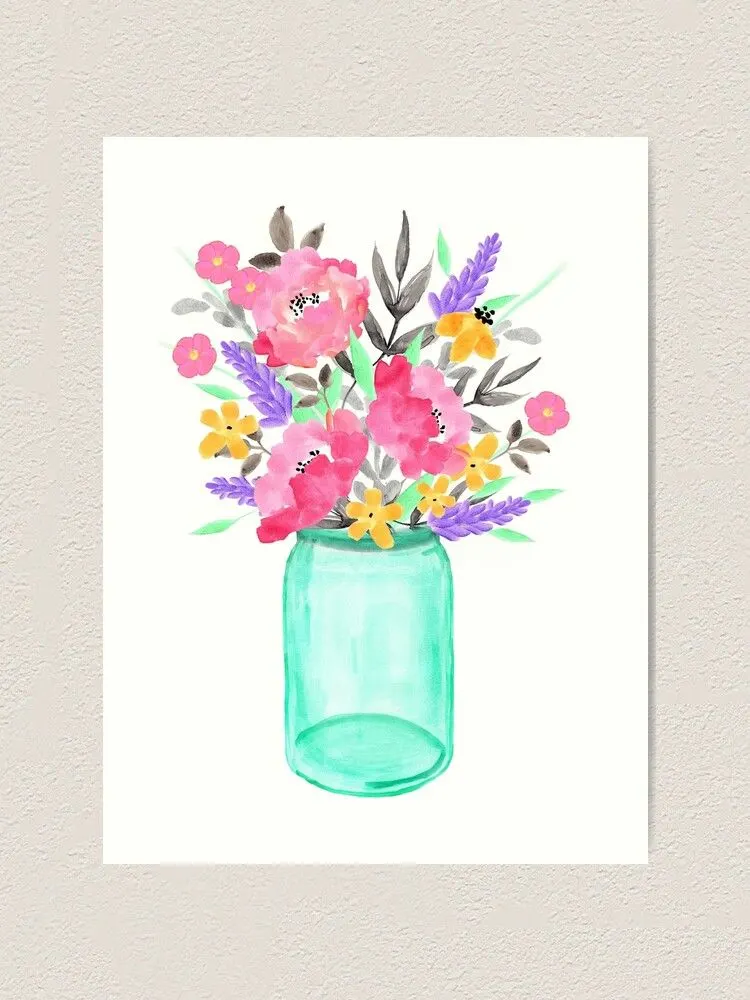
Instead of drawing flowers scattered over your paper, assemble them in a jar to display your watercolor painting.
To paint flowers in a jar, draw a rough sketch with a pencil.
Then, paint your jar.
After that, add various flowers and leaves to it.
Loose Watercolor Tulips
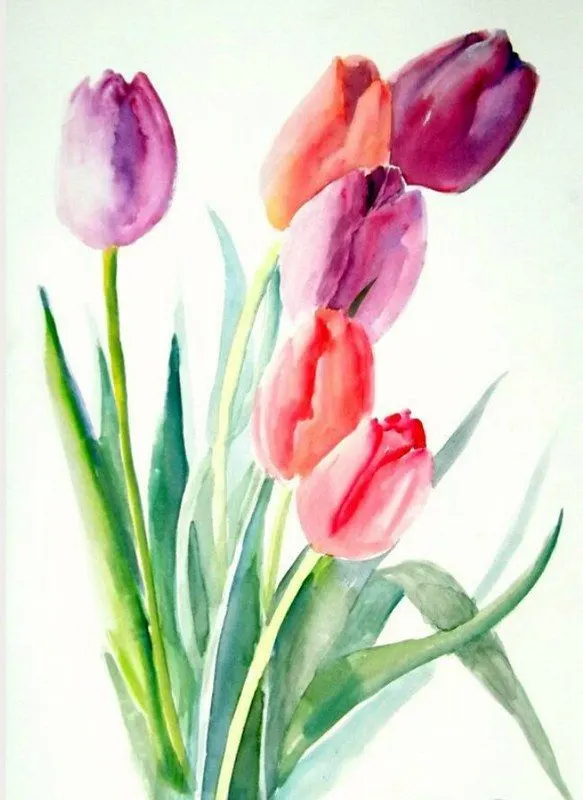
Relax by painting loose watercolor tulips.
Draw tulips at equal distances.
Blend two different colors for each tulip.
Then, join them with thin stems and complete the painting by adding long green leaves.
Creating Soft Texture with Salt!
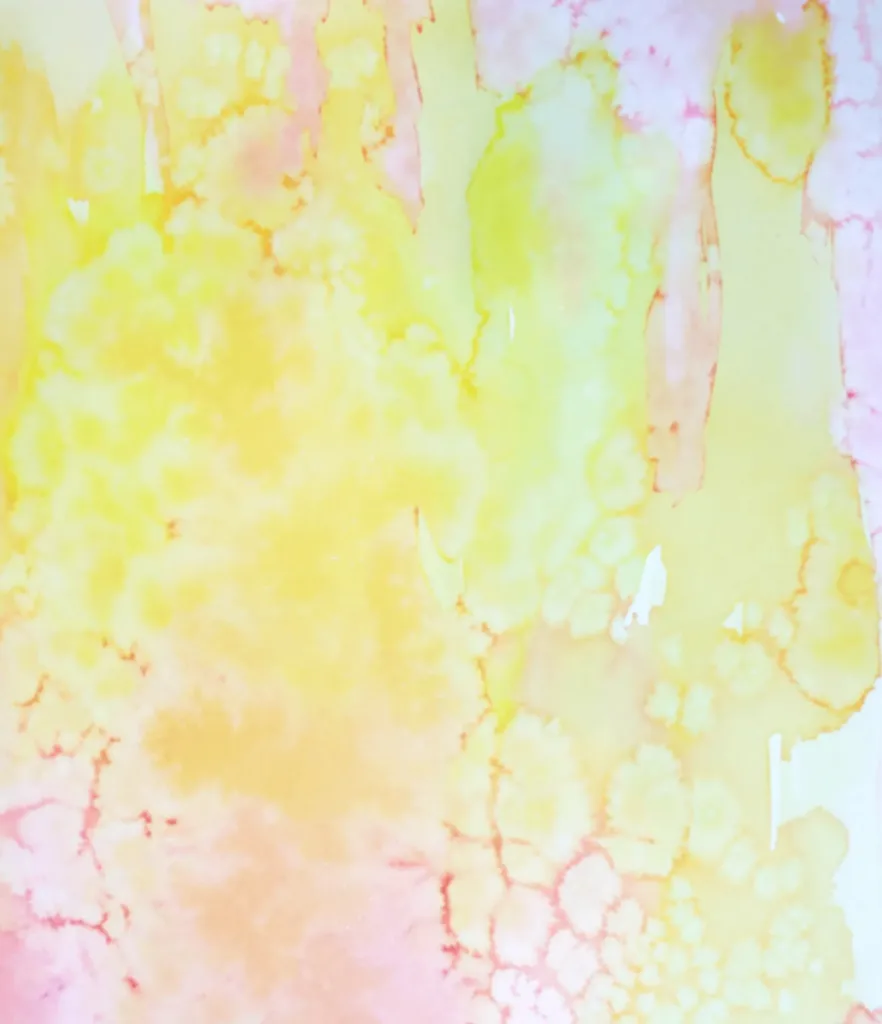
Salt soaks water and produces interesting textures.
Sprinkle some salt over your painting when it is still wet.
The salt will make some areas lighter.
This method is an excellent technique for adding variety to a flower field or bark of a tree.
Dress Designing
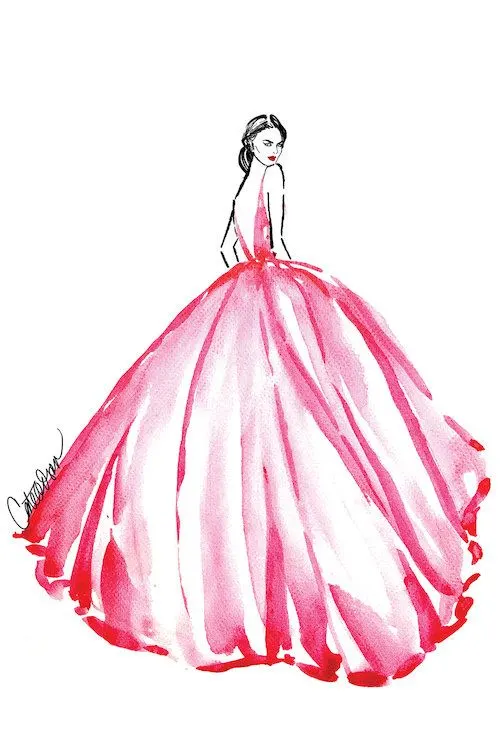
Do you love fashion?
Then, you can become a fashion designer with watercolors.
Draw models wearing different styles of dresses.
Design the dresses with gradient and ombre techniques.
You may add various patterns using colorful markers.
Be creative and create unique gowns.
Bicycle with Flowers
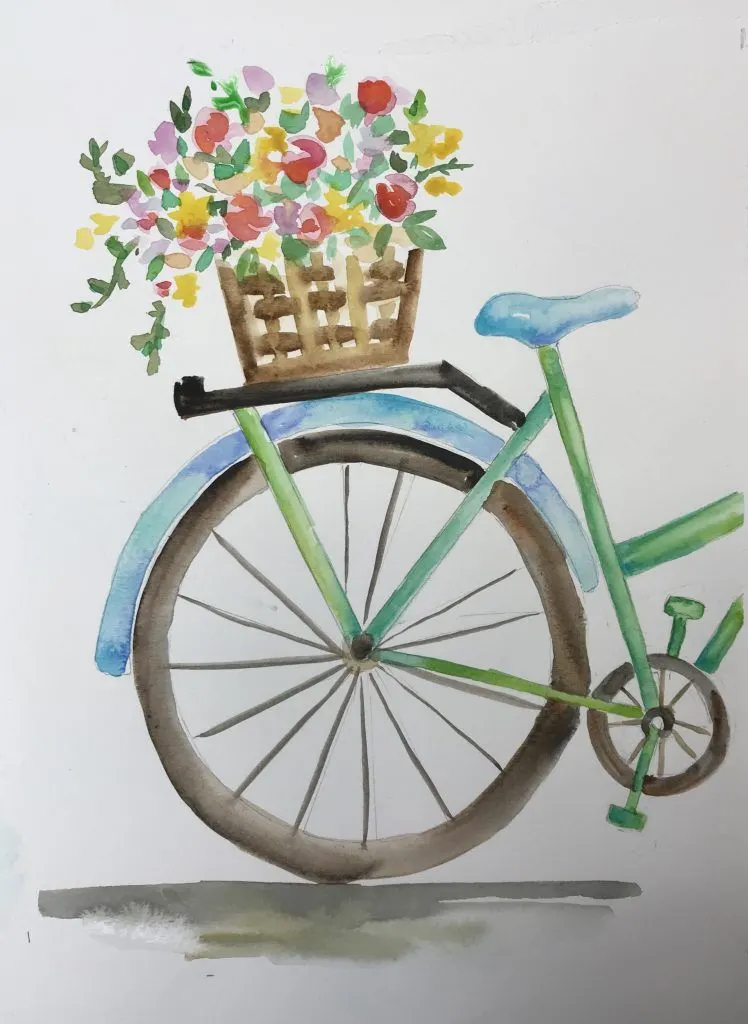
Draw elements from real life with these watercolor ideas.
You can paint a bicycle with flowers in watercolors.
Draw a bike and paint it creatively.
Add a basket full of flowers on the rack or in the front of the cycle.
Fill the flowers with your favorite colors.
Cute Cactus
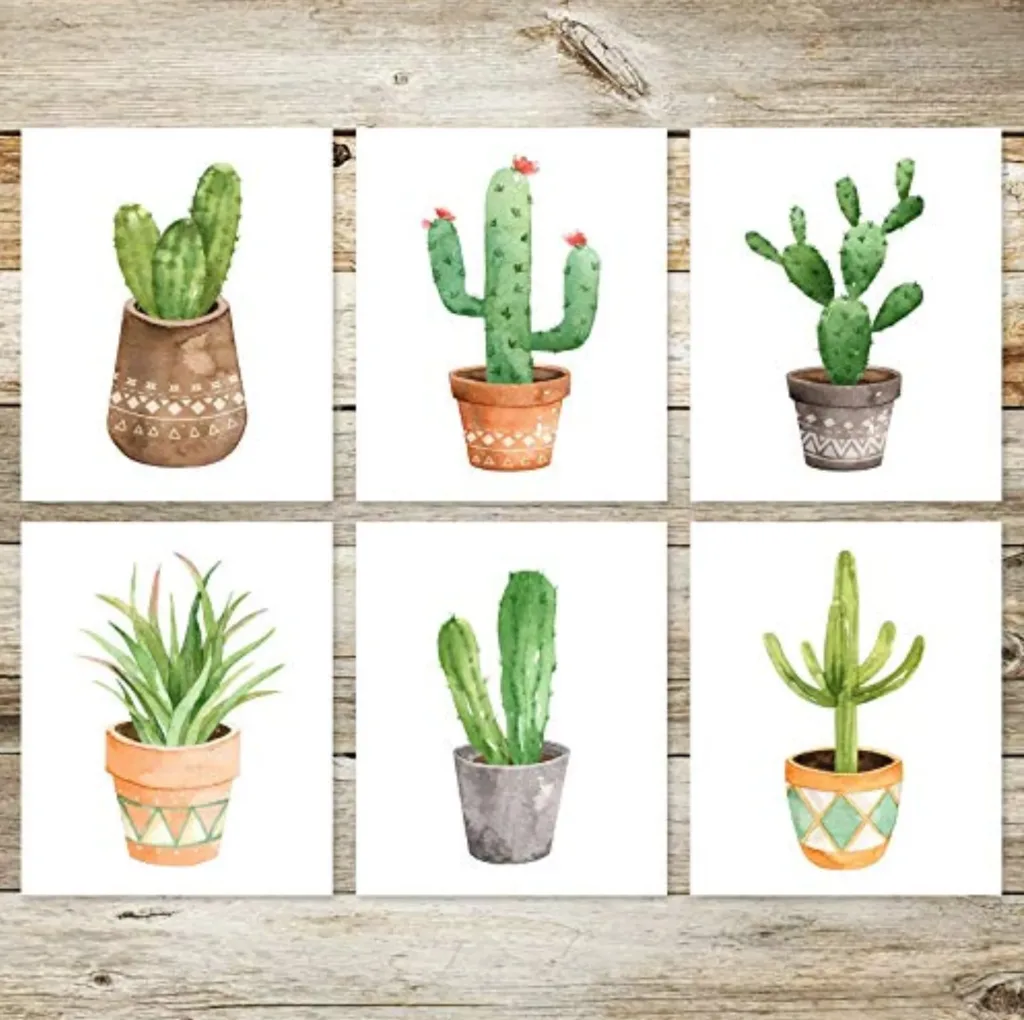
Paint cute, little cacti with watercolors.
Divide your paper into equal boxes.
Fill each container with cacti of various shapes and sizes in pots.
Now it is time to get creative.
Mix and produce different shades of green to color them.
Add spines with a black marker.
Sunflowers
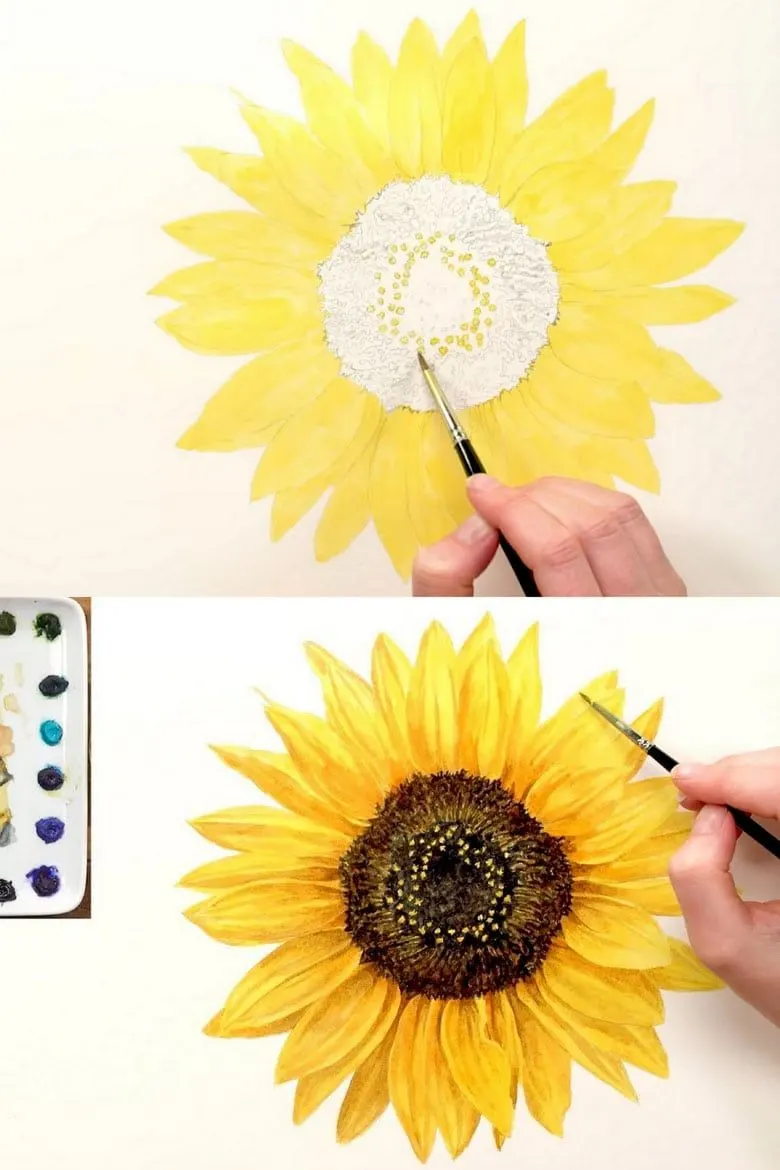
Painting sunflowers is one of the best watercolor painting ideas.
The vibrant yellow color is fun to work with.
Create different shades by mixing the yellow color with red and orange.
Next, add dark and light shades to the petals.
Finally, fill the center with dark brown.
Powerlines
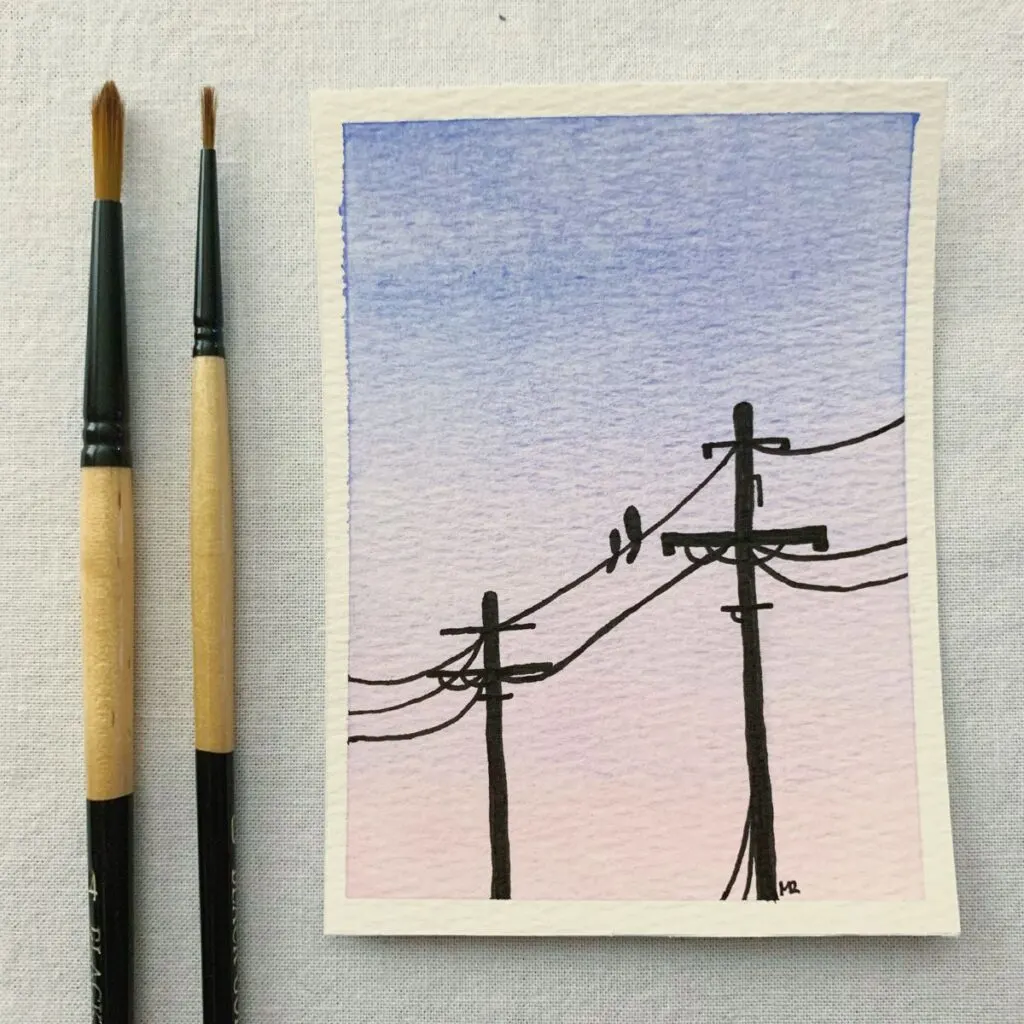
This painting is one of the most straightforward yet creative watercolor painting ideas for beginners.
You can start by painting the background with a gradient effect using any contrasting colors.
Then, after the painting is arid, draw power lines with soaked black paint.
Two Different Worlds
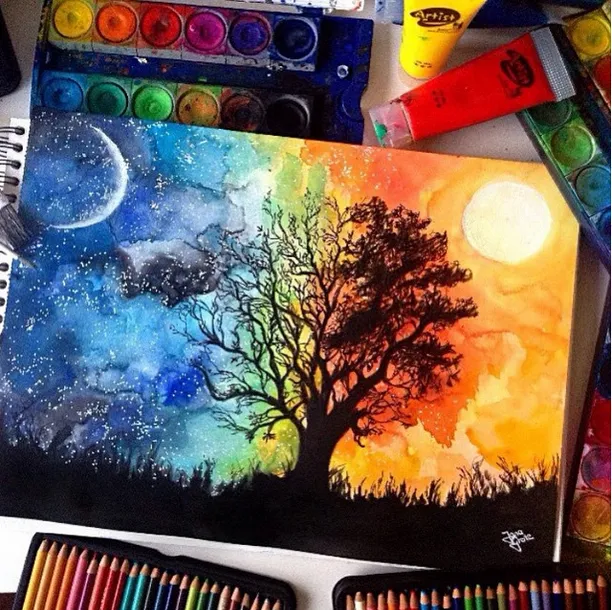
Portray two people from different worlds with these watercolor painting ideas.
You can divide the paper into two equal portions.
Paint one side with brighter shades to depict a fire world.
On the other side, add cool colors to display a water world.
Finally, draw a black tree in between.
World Map in Watercolors!
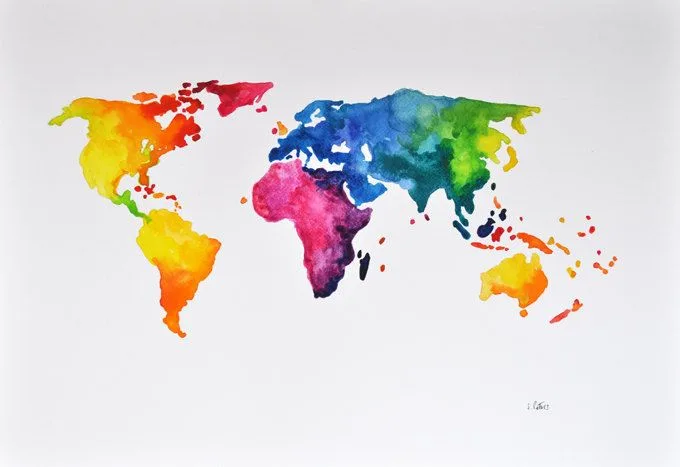
Make the world colorful with watercolors.
First, draw the world map on your watercolor paper.
Next, apply water in the land portions.
Now have fun by blending different colors to create beautiful continents.
Moreover, this activity will make you a master at controlling the paint.
Hot Air Balloons
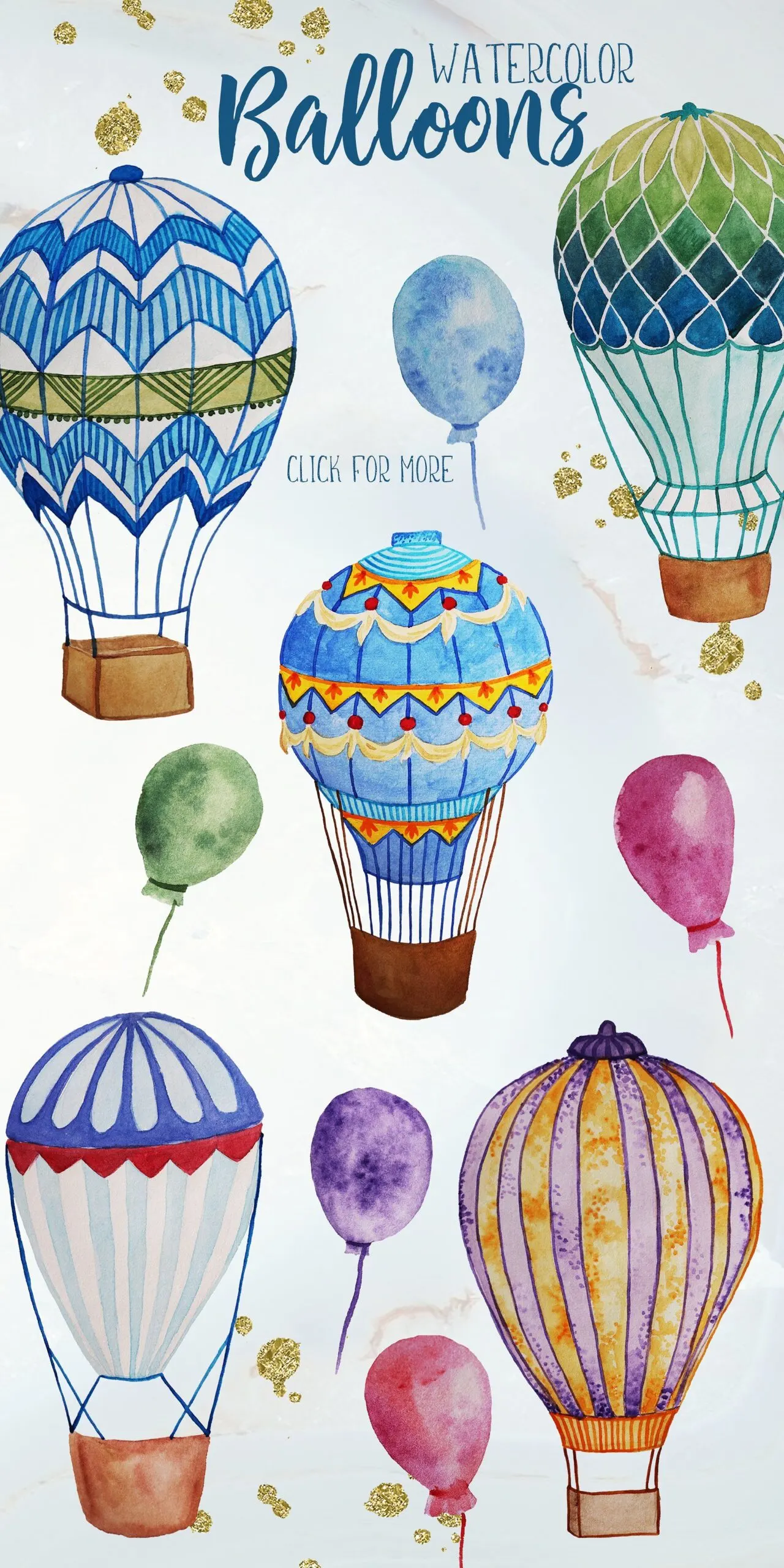
Practice watercolors with this fun activity.
Paint the background with dilute blue to create the sky.
Next, draw hot air balloons on your watercolor paper.
Make each balloon unique by adding various styles and patterns.
Color them with watercolors.
Try producing textures with the dry brush technique.
Layering Technique
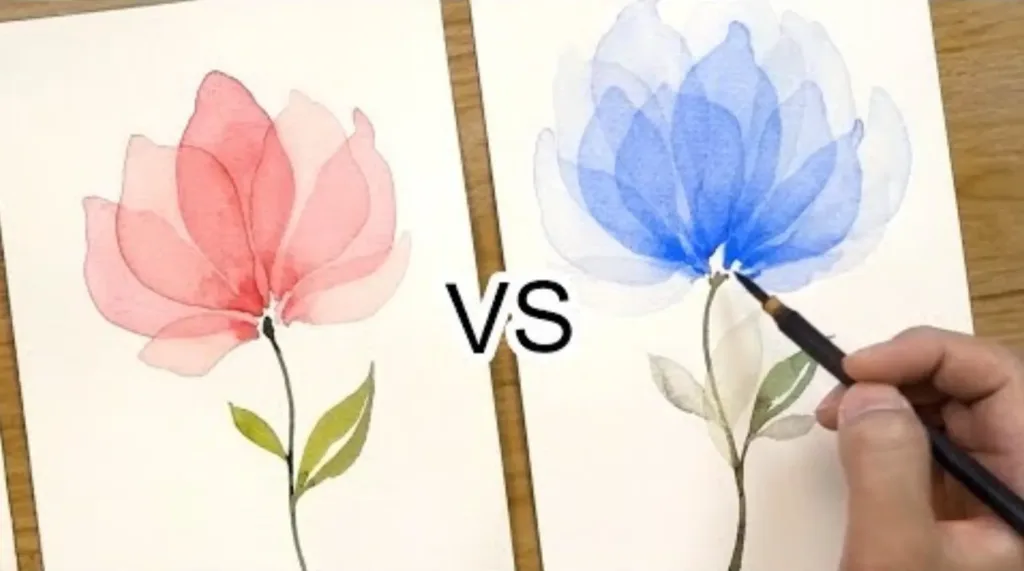
The layering technique in watercolors is also known as glazing.
It is not complicated at all.
You simply add multiple layers of the same color.
The layers get gradually darker.
You can create a beautiful flower with this technique.
Add light petals and then darker ones over them.
Lifting Colors
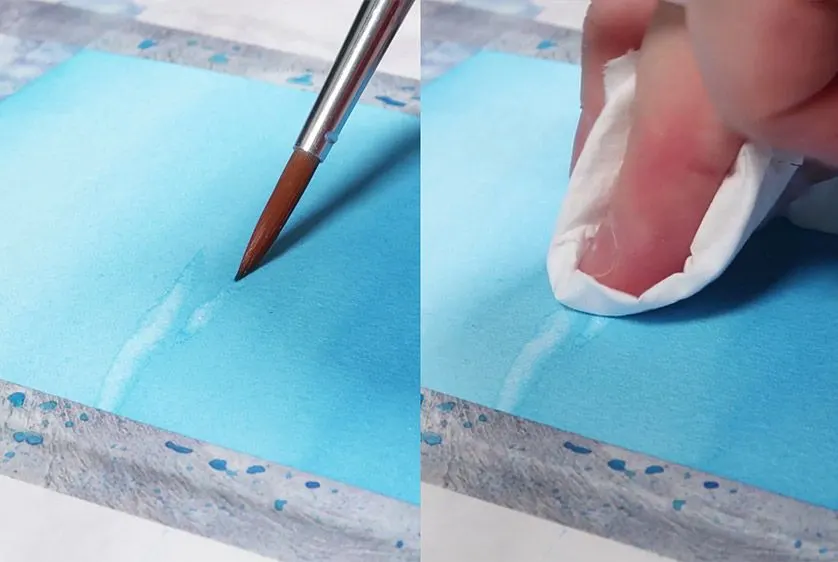
You can create a cloudy effect with the lifting technique.
After painting the sky, blot some areas with paper towels.
If the sky paint has dried, then dampen it with a brush.
Then, dab it with your paper towels.
Moreover, this technique helps erase paint from your painting.
Feathering Effect
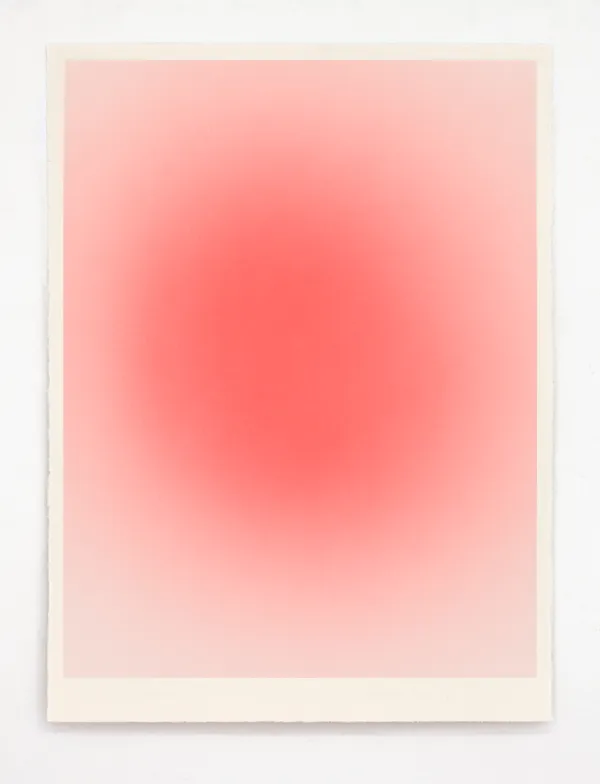
Feathering in watercolor means creating soft edges or moving from dark color to no color.
Draw a circle or use the entire paper to practice feathering.
Damp your brush and load the tip with paint.
Do not use excessive paint.
Apply the paint in a circular motion.
Move your brush slowly until the color fades.
Scumbling Technique
The scumbling technique means to add wet color over dry color.
It enables you to produce different hues of the same color.
For example, you can add textures to grass, tree leaves, feathers of birds and create water ripples.
With this technique, you can create scratchy and speckled effects.
Doodling with Watercolors
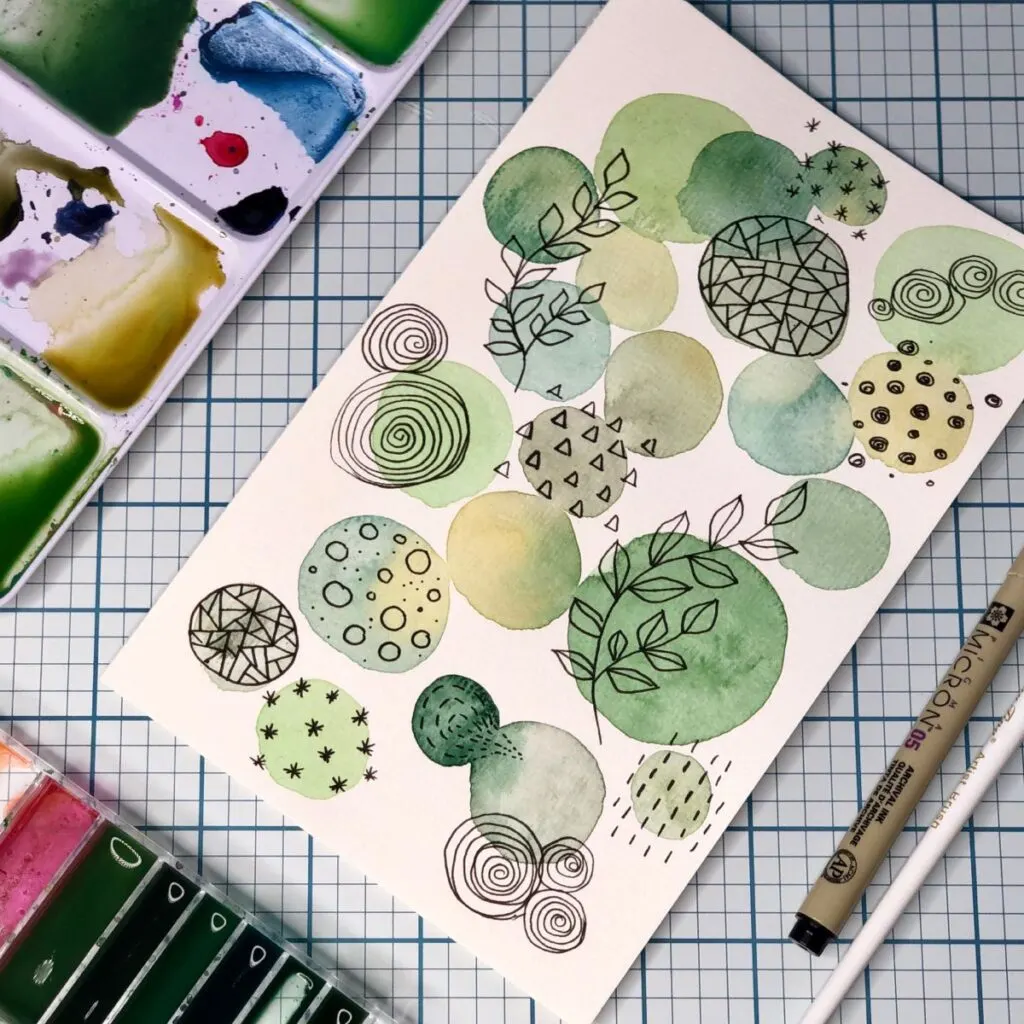
Are you getting bored?
Then DOODLE!
Complement your regular marker doodling with watercolors.
Create various paint spots on your watercolor paper.
Then, draw different shapes, elements, and patterns over the colors.
Watercolor doodling is one of the most amusing watercolor painting ideas.
Still Life Painting
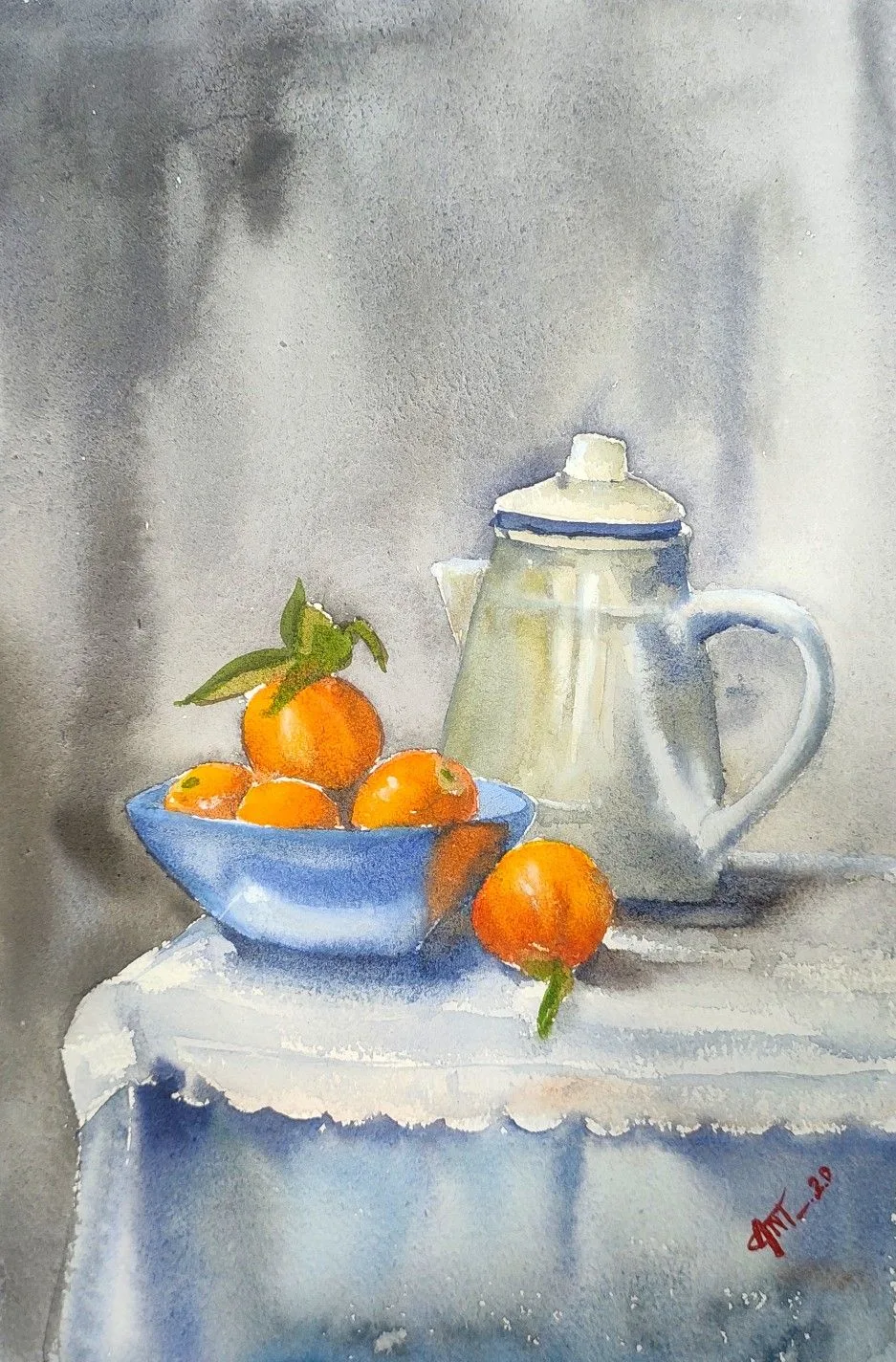
Still-life paintings are a great way to enhance your watercolor skills.
Assemble some objects like glass, fruits, teapots, bottles, etc.
Sketch them on your paper.
Now bring them to life with watercolors.
The colors don’t need to be exact.
Add your imagination to the paper.
Creating Colorful Background for Calligraphy
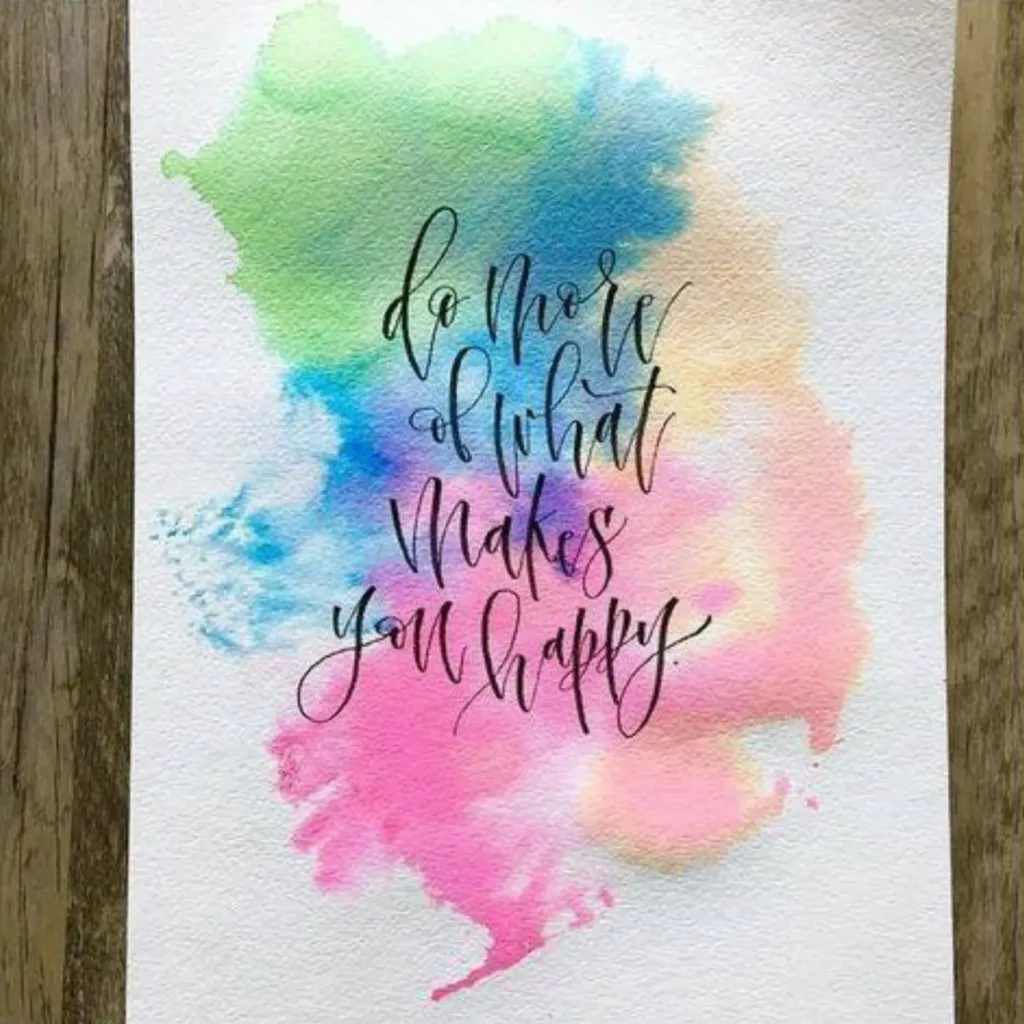
Do you love calligraphy?
Then, create beautiful watercolor backgrounds for your writings.
First, wet your paper and then add colors to it.
The colors will blend and produce amazing effects.
You can also use the plastic technique for more texture.
Then, write over it when dried.
Conclusion
Please take time to go through these simple watercolor painting ideas.
Even if you have to bookmark this page and come back to it later, there’s a lot of easy things you can do that don’t take much time.
With these easy watercolor techniques, some basic supplies, and this detailed tutorial, you can improve your watercolor paintings in no time!

